
A day trip photo essay
10th October, 2019
We decided to go orchid hunting on this fine day in mid Spring. Our chosen site might sound unpromising - a helicopter landing site.
But a hot tip from a friend and retired employee of the NSW National Parks and Wildlife Service encouraged us to investigate it.

This area, which is about the size of a football (i.e. soccer) field, is slashed occasionally. This has prevented the growth of bushes and trees but the site is otherwise undisturbed (helicopters almost never land here!). Its location in the Nadgee Nature Reserve, on the edge of a declared Wilderness Area, also affords considerable protection.
From a distance the clearing appears uninteresting. But as you start to look around, you quickly appreciate the rich diversity of low growing plants on display. Many of these were flowering, making them relatively easy to identify (with the help of some knowledgeable friends).

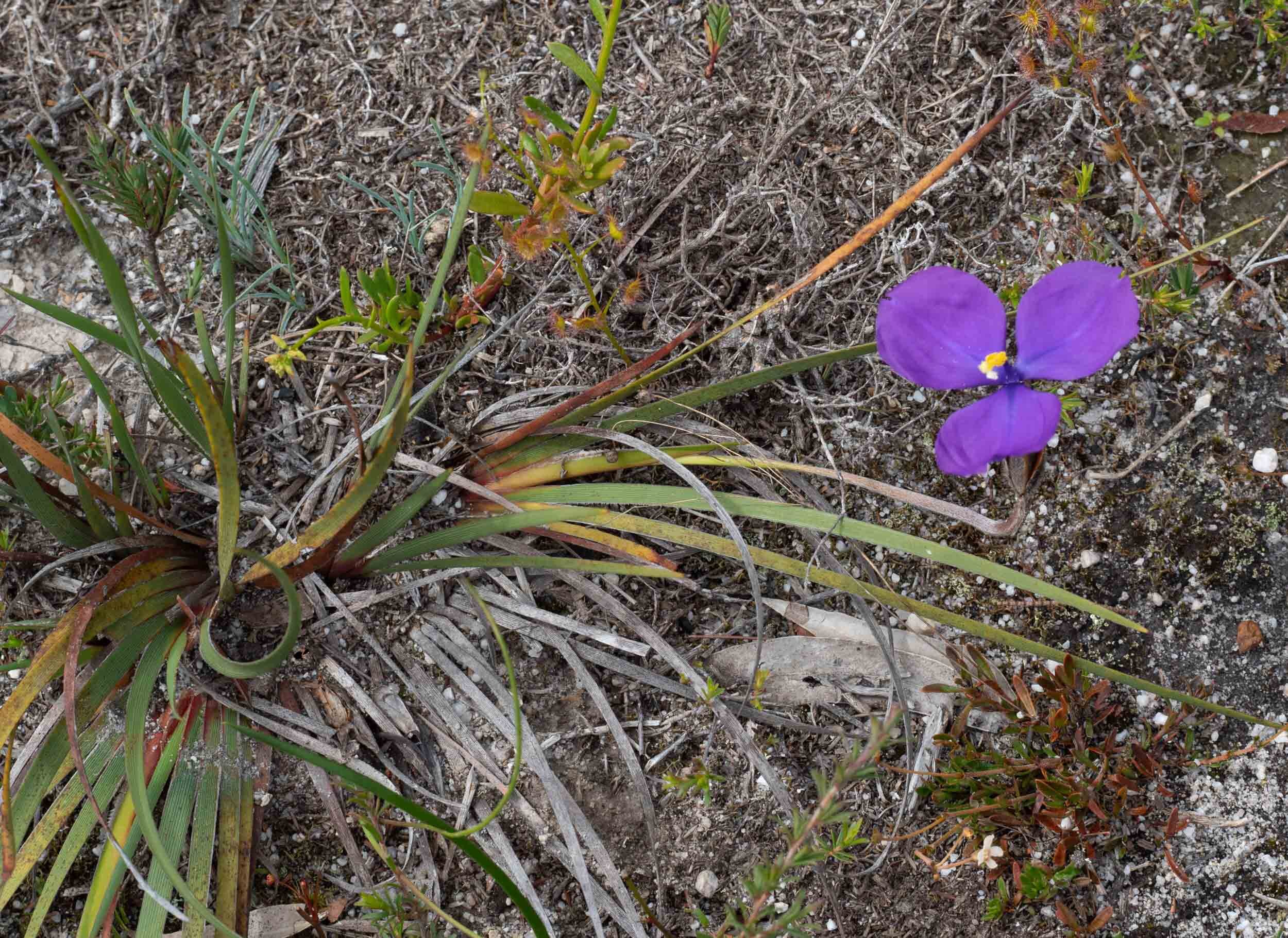
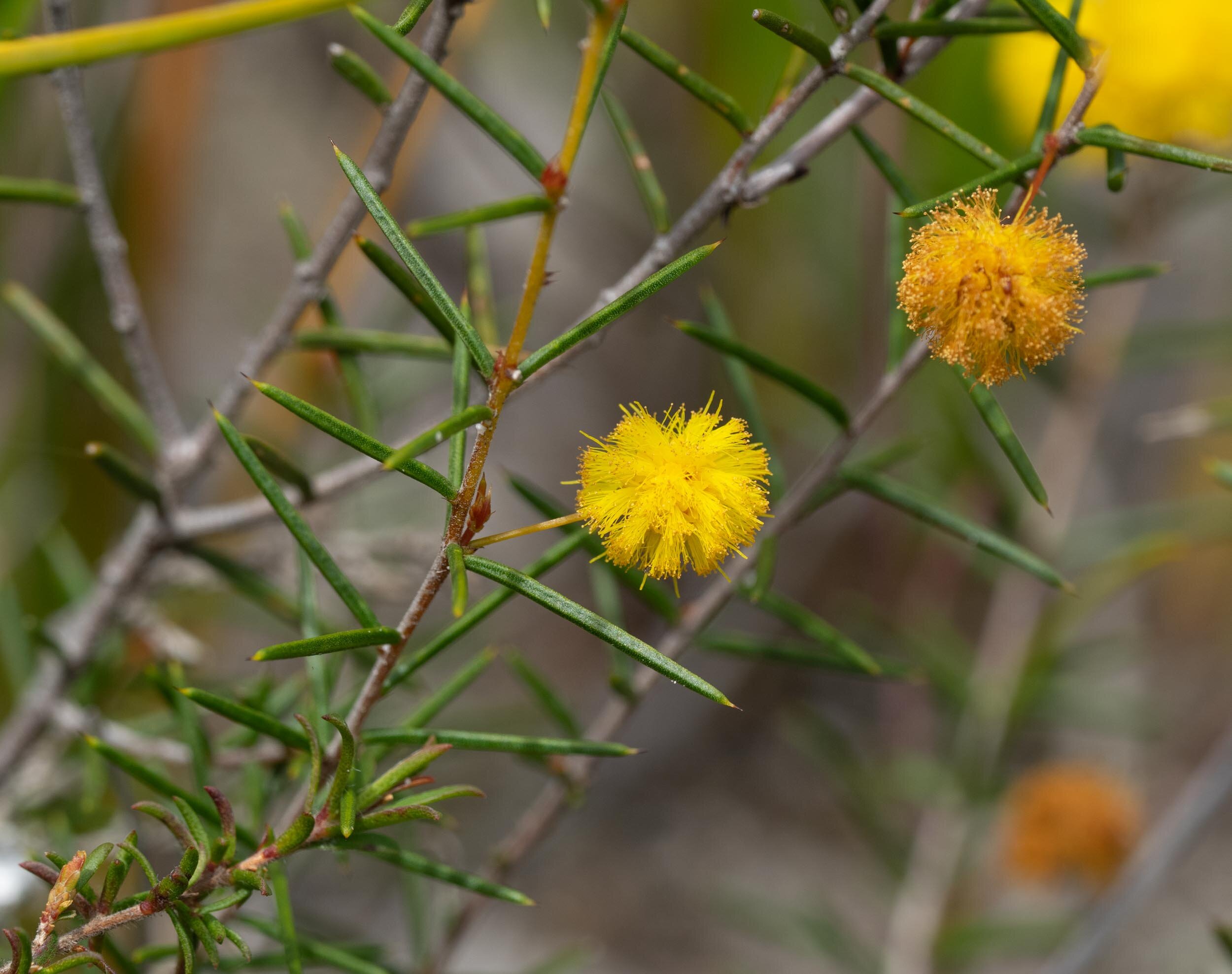
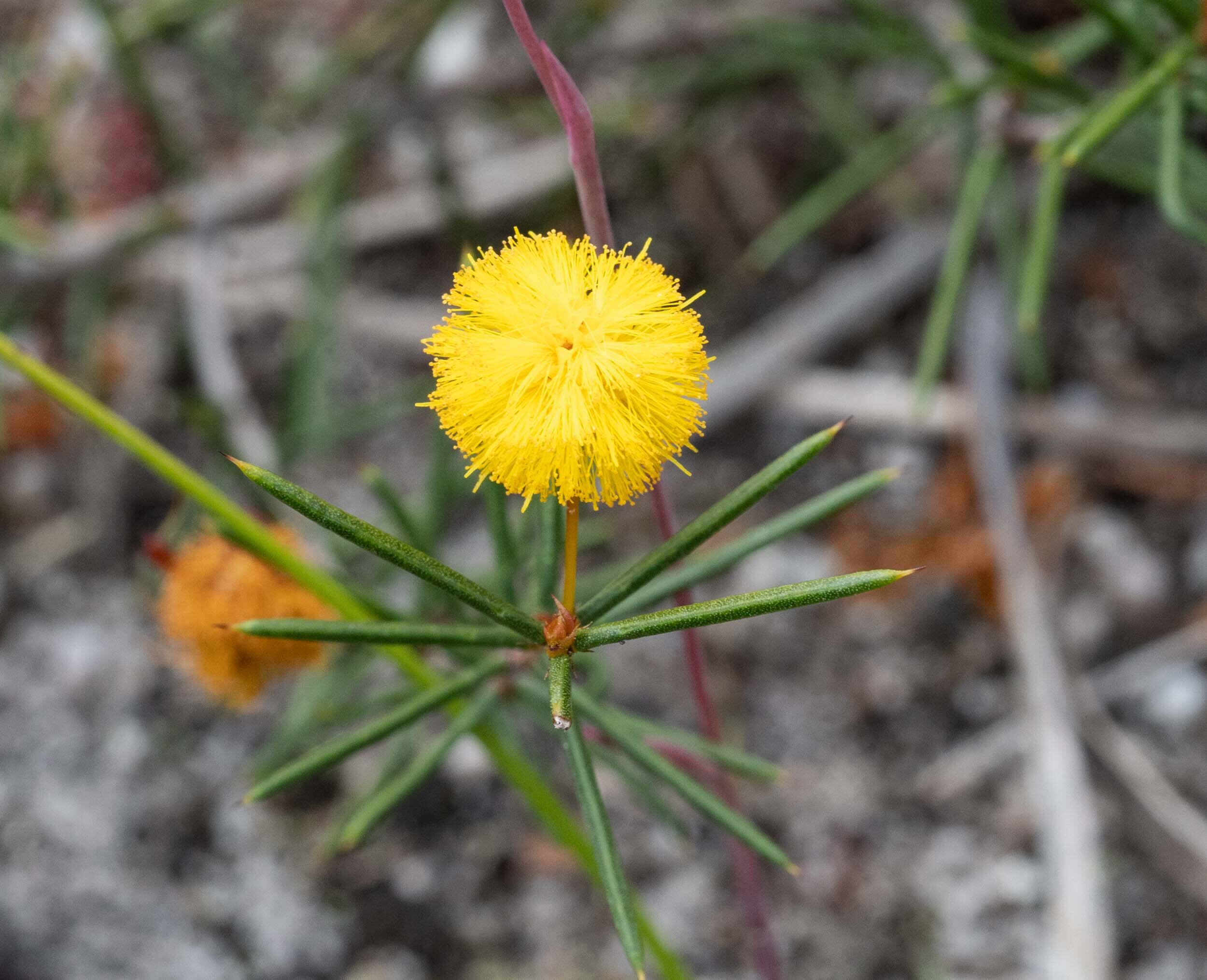
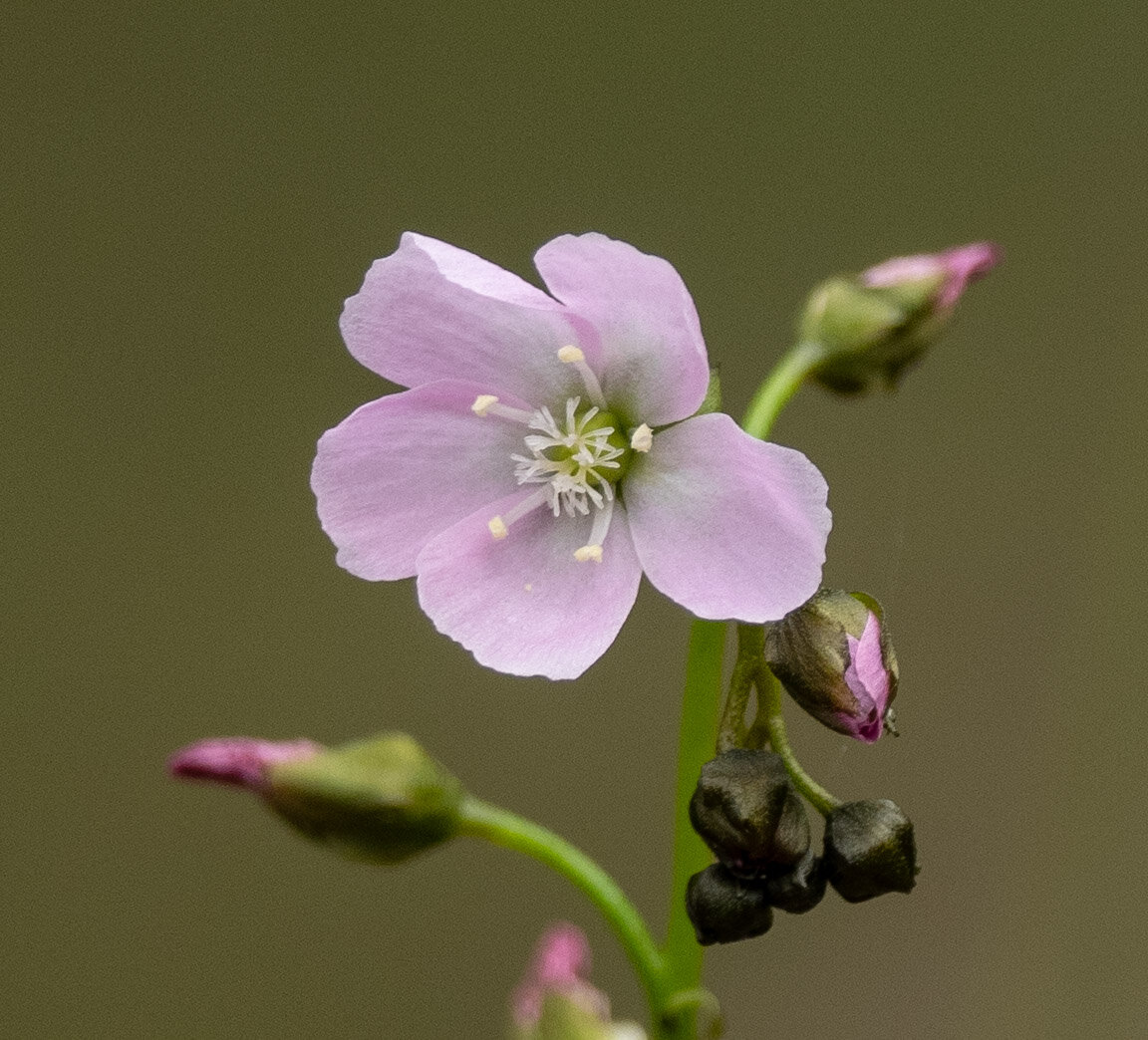

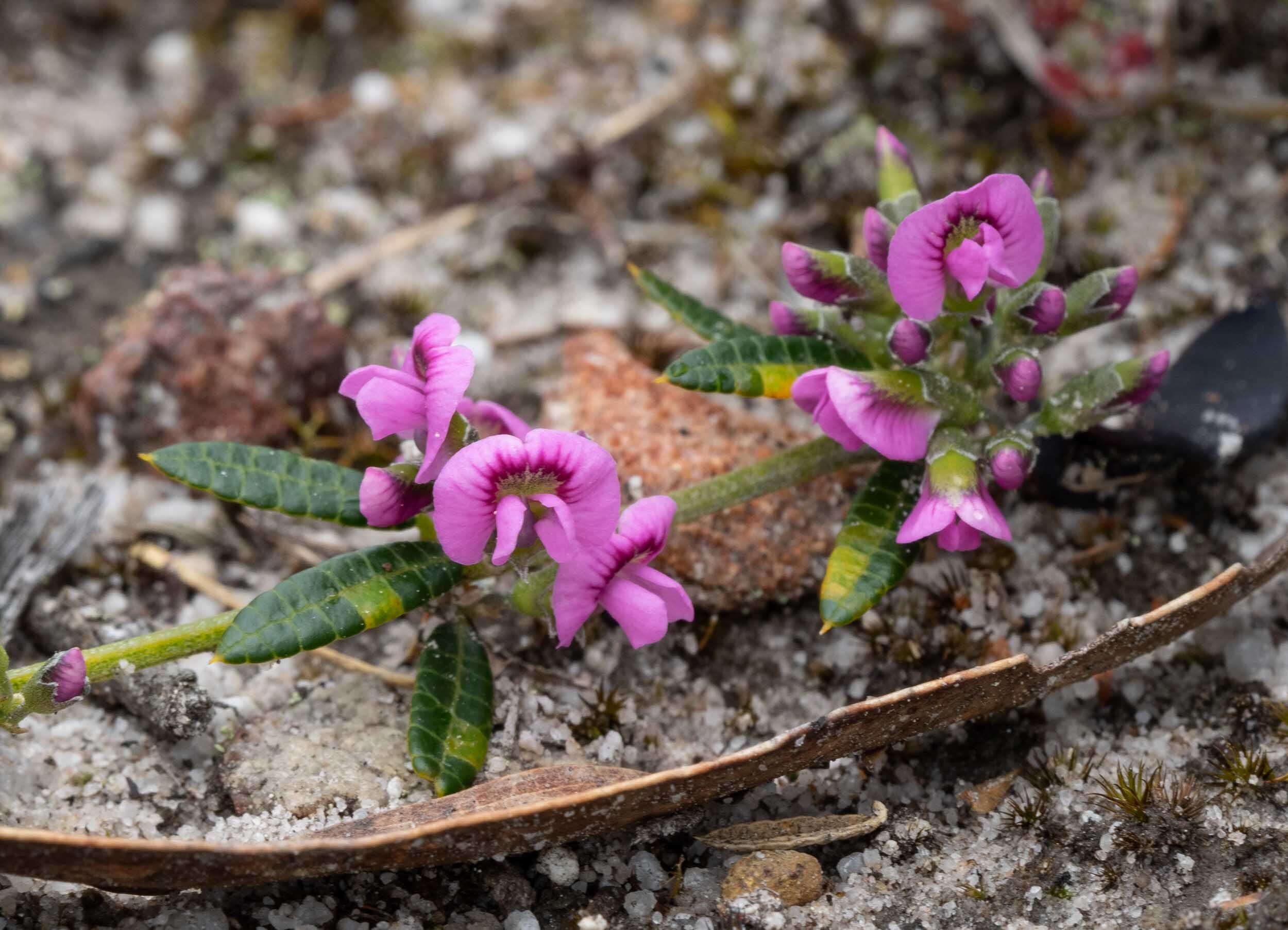
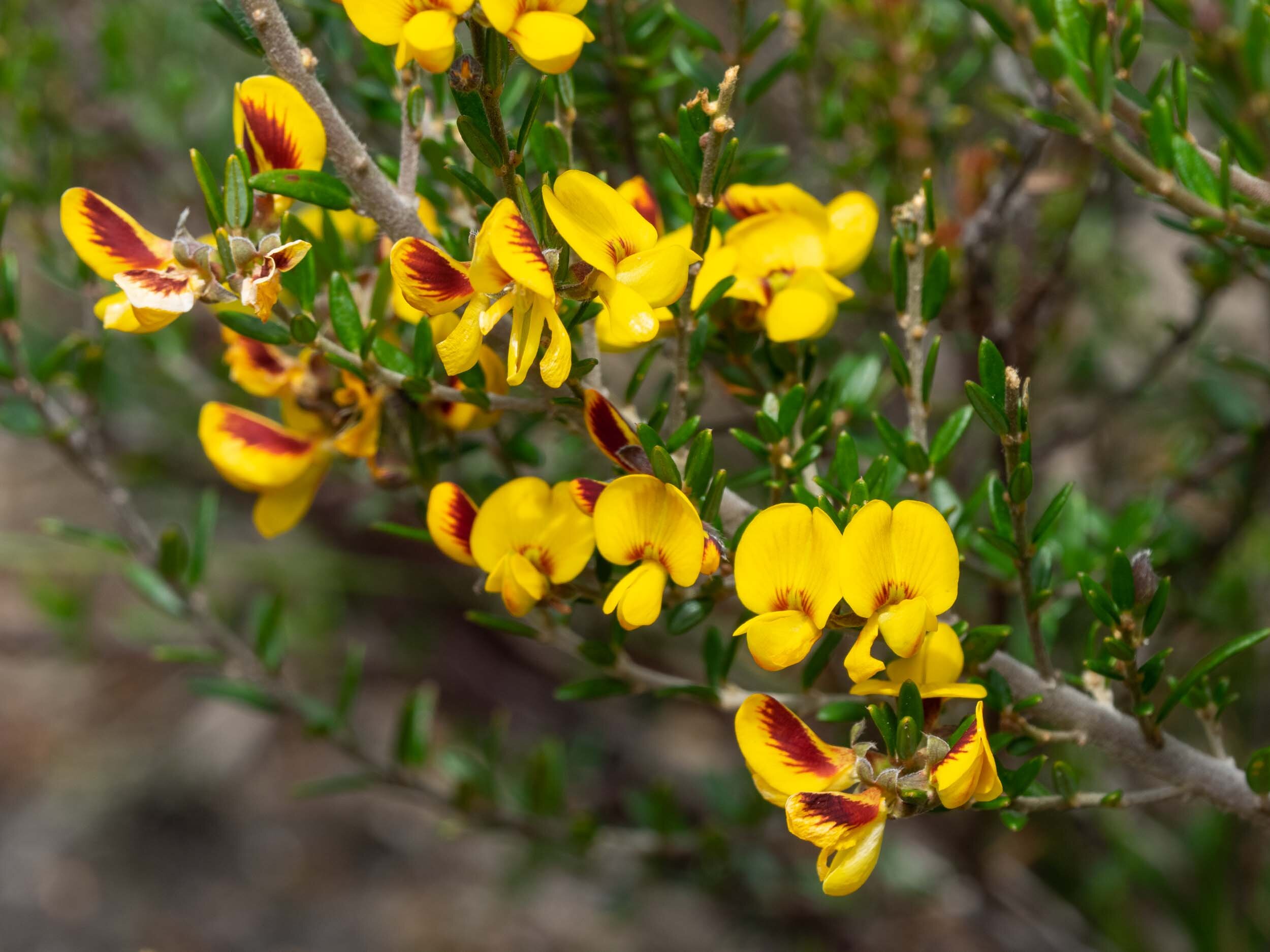
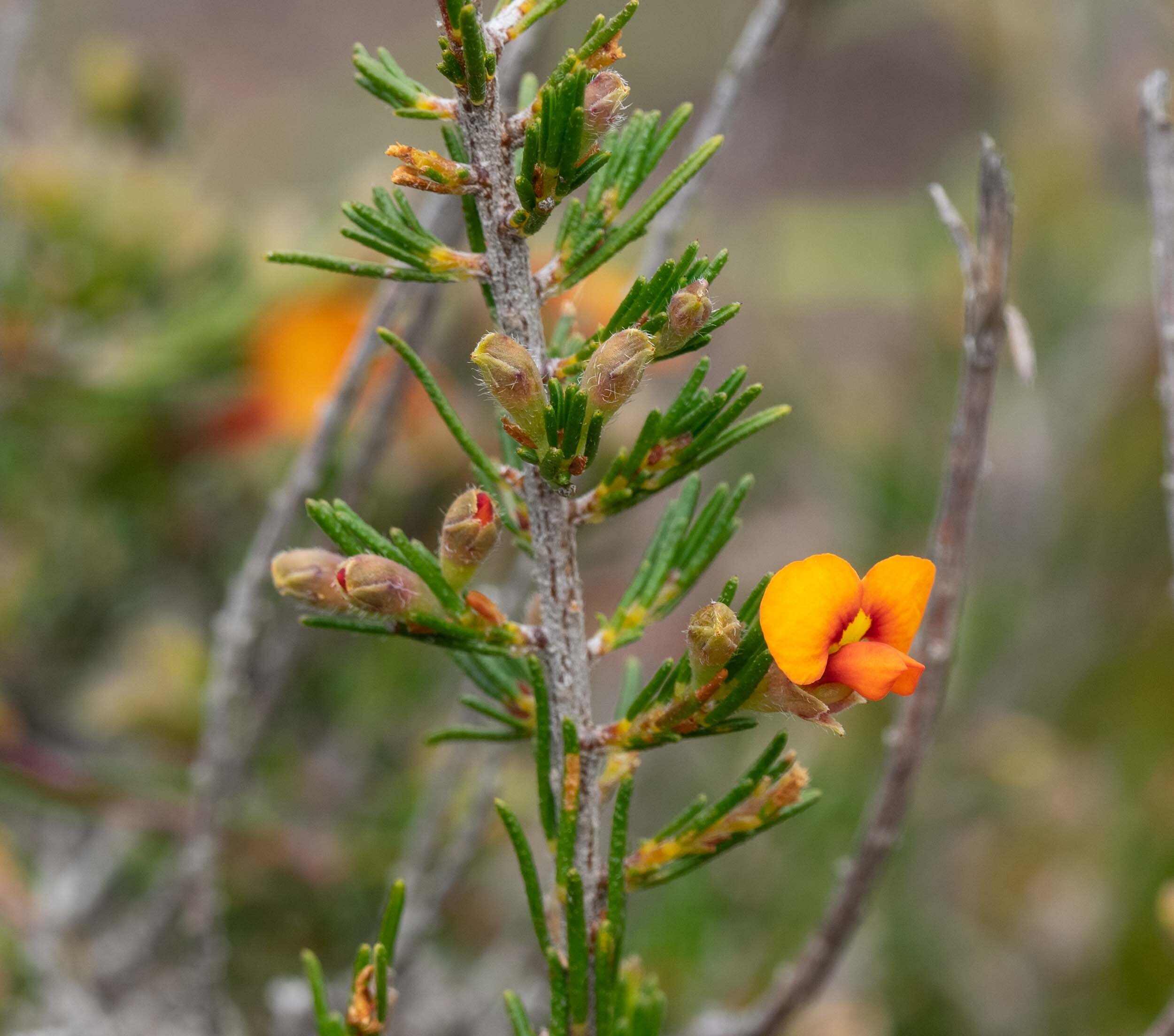
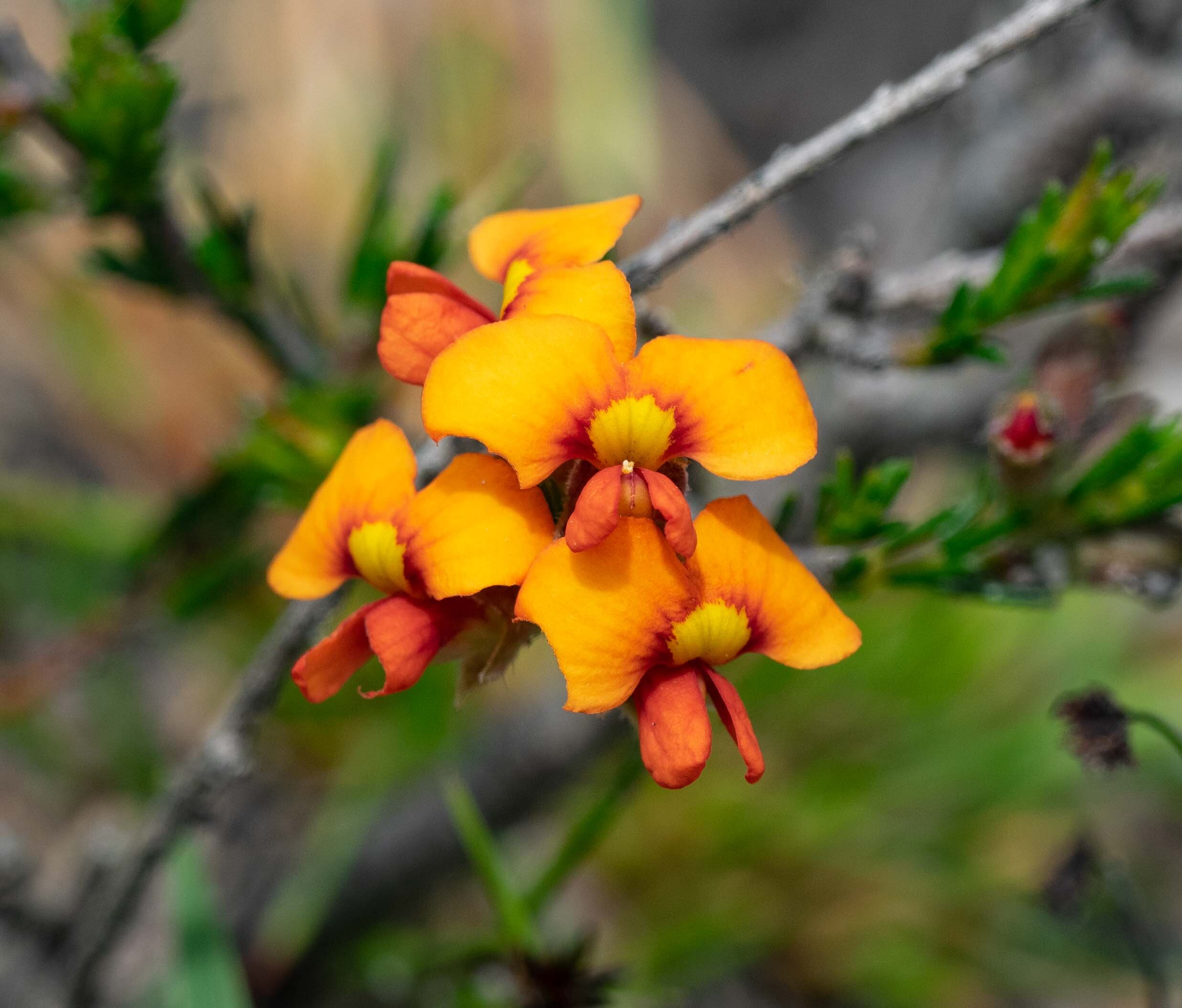


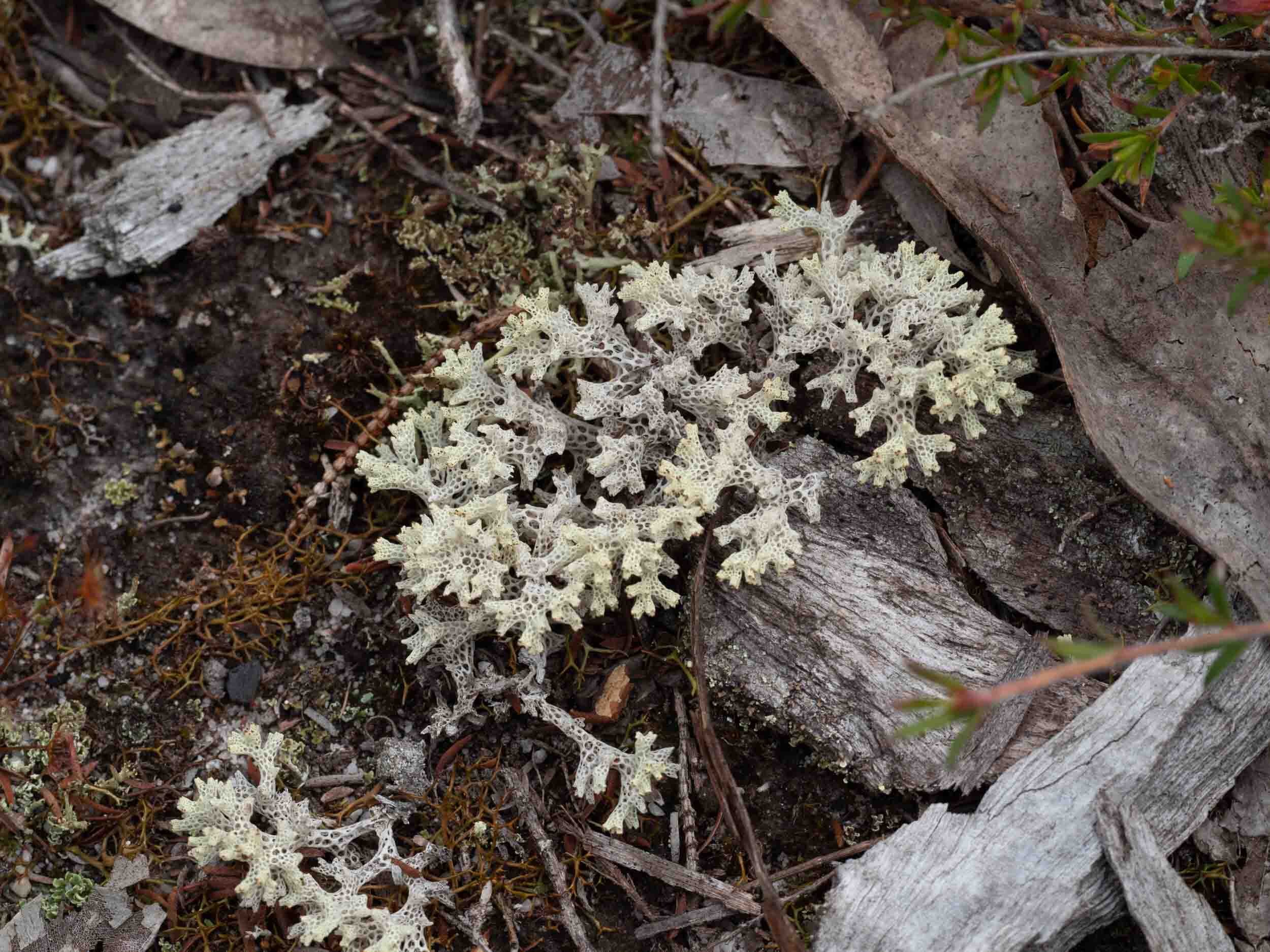
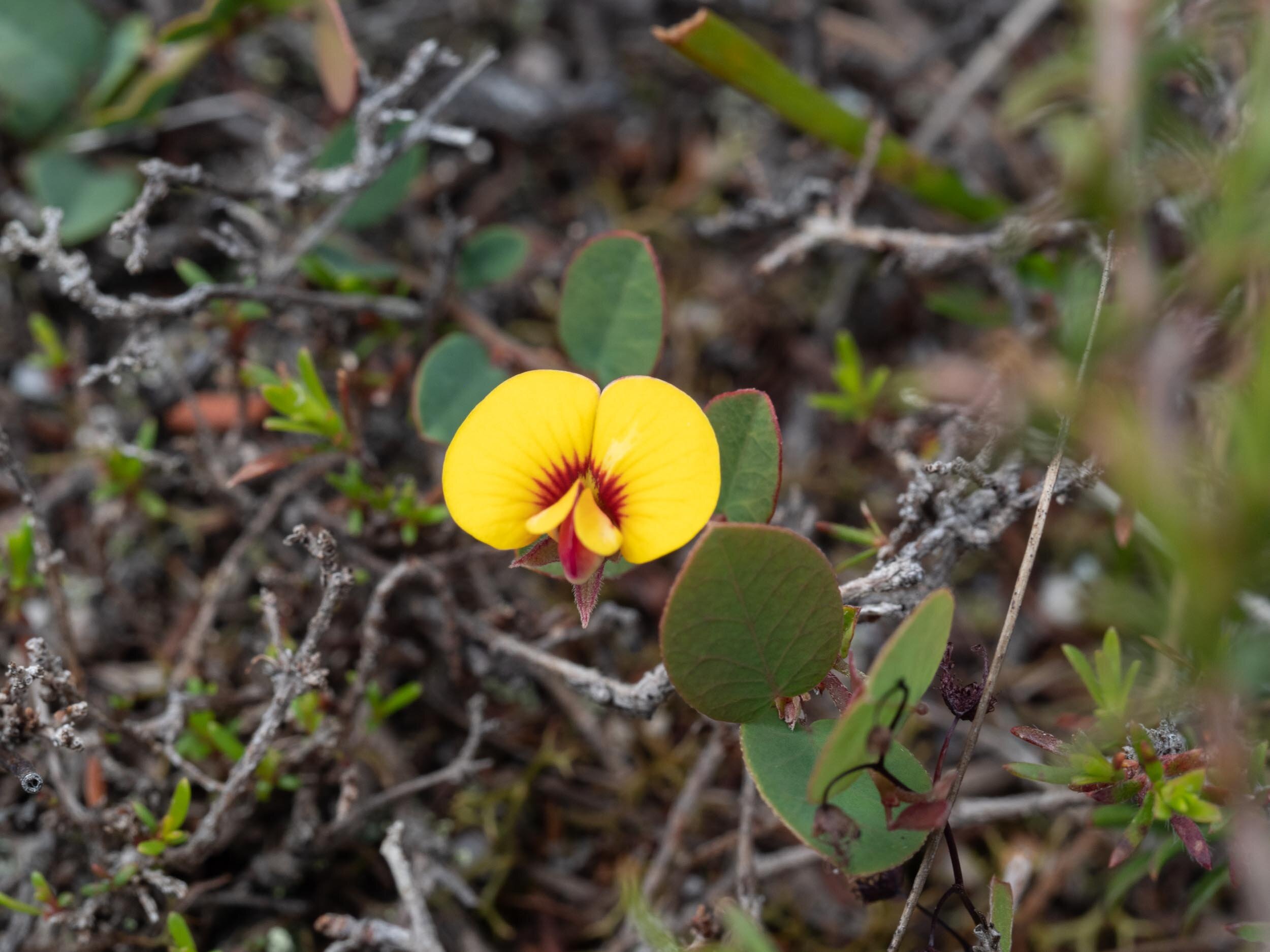
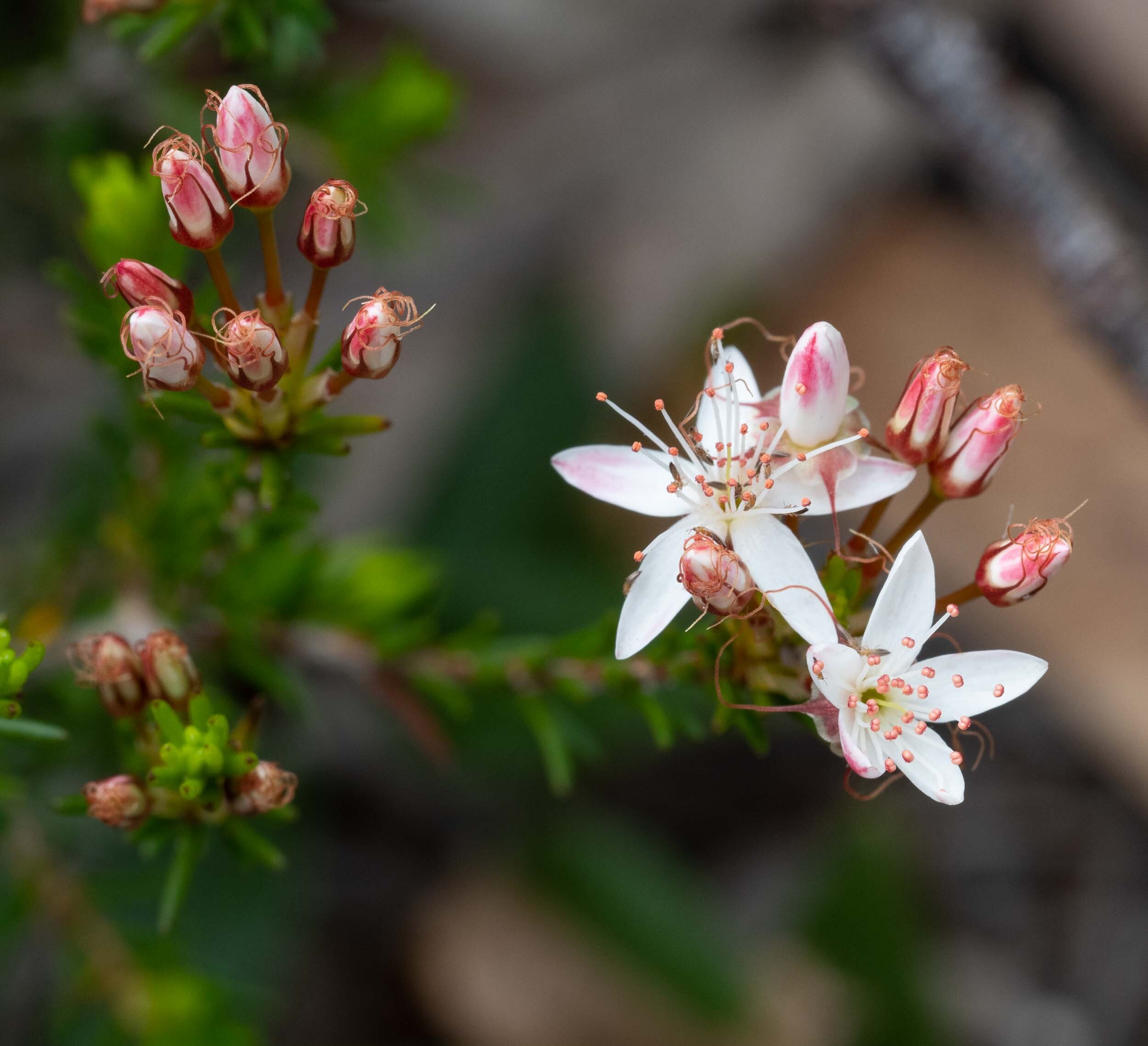

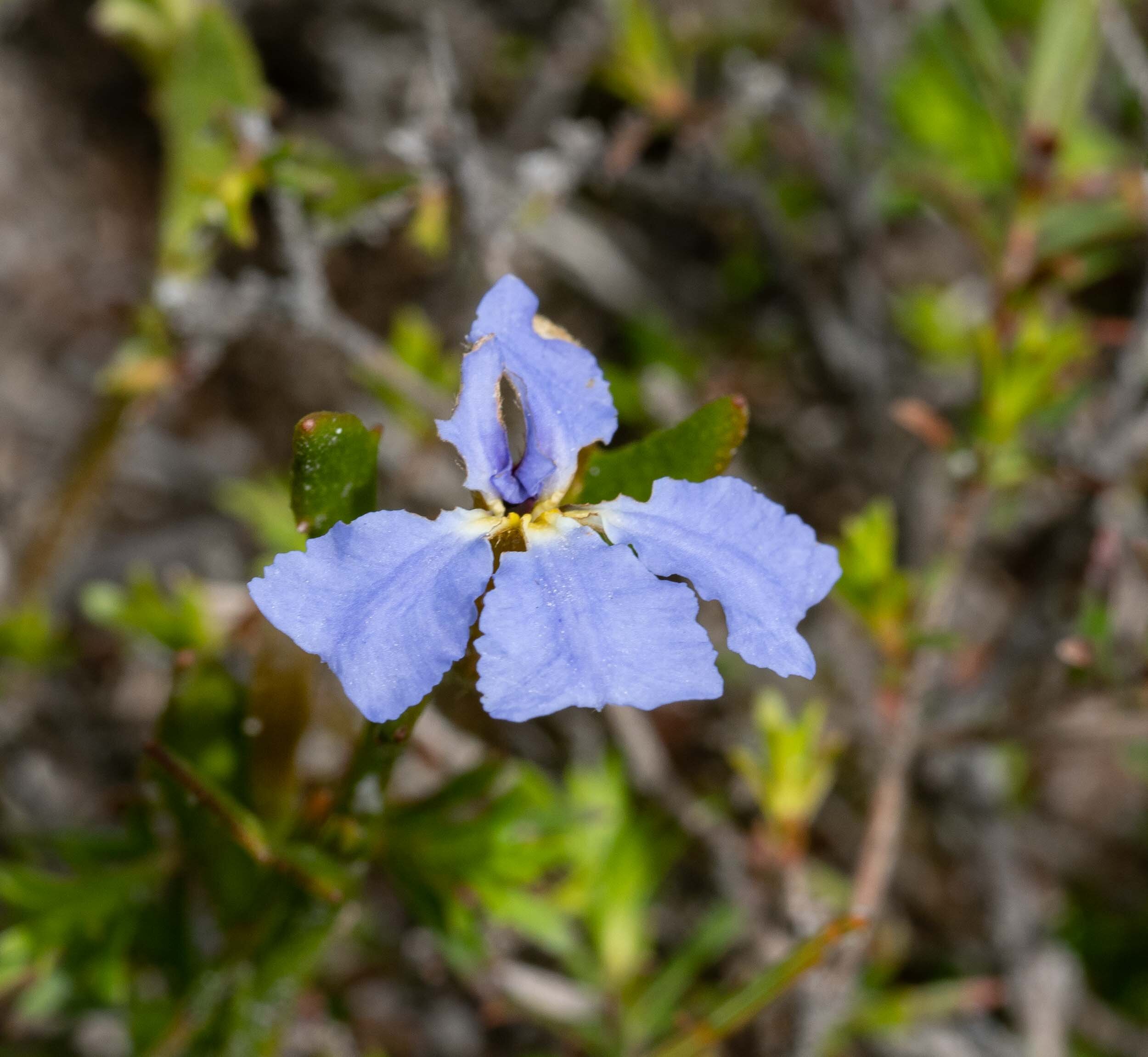

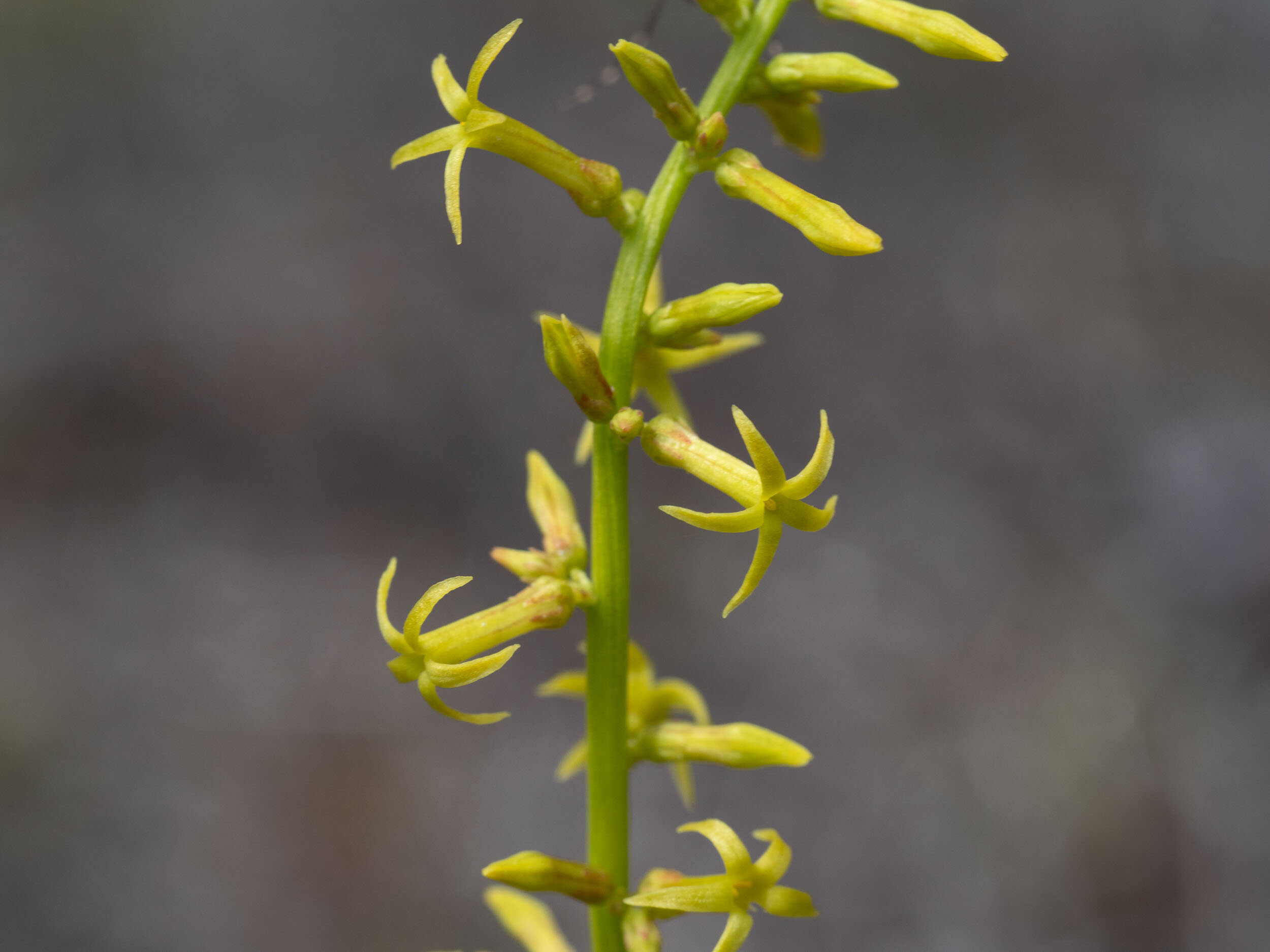
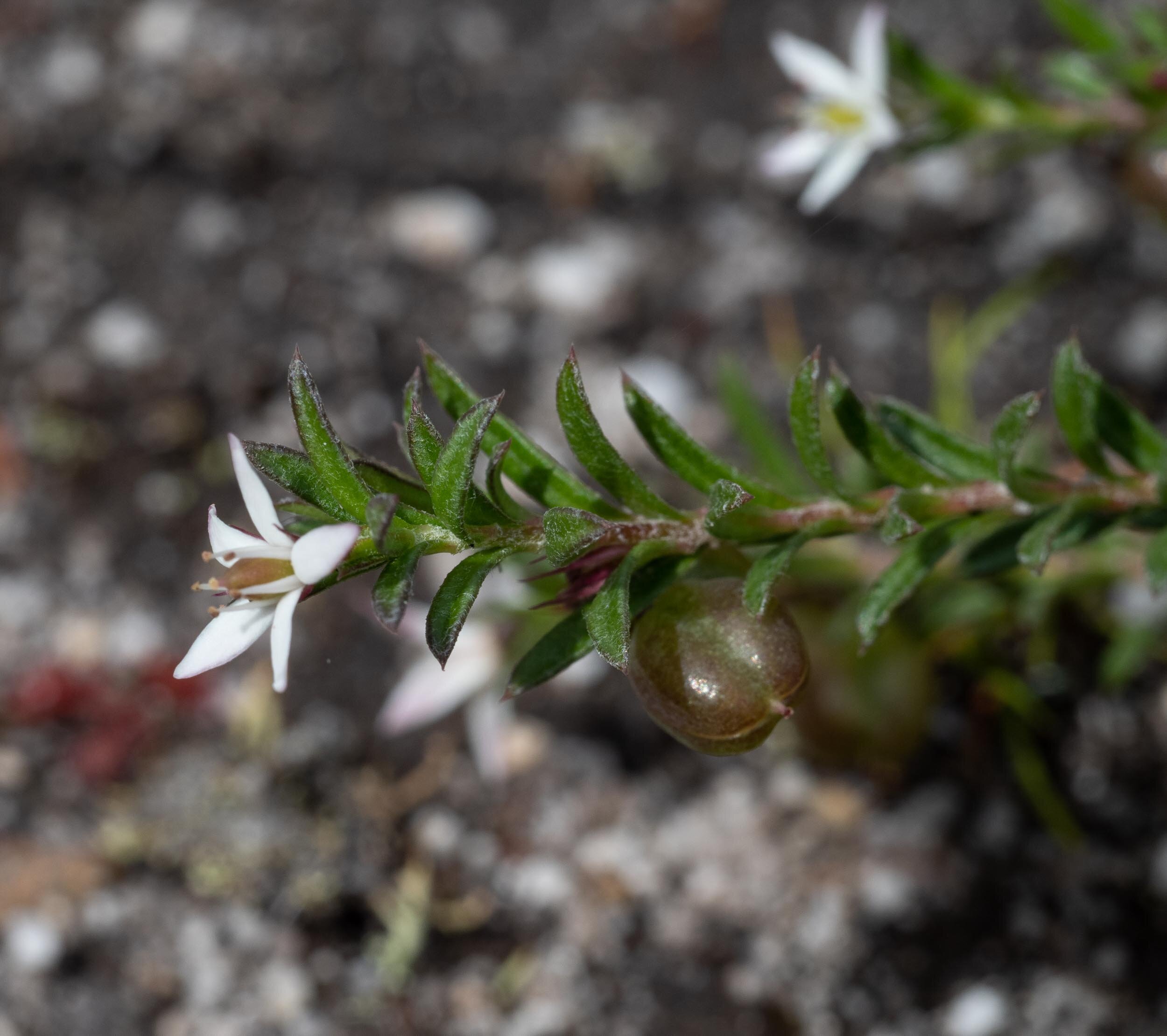
It is an interesting range of species. Most of these grow in our home forest - not surprising as we live only 9km away. However several appear to be specialists of the coastal heath and at least one - Heath Wattle - is rarely encountered in our region.
But what about the orchids? On the day we visited, three different species were in full flower - two Wax-lip Orchids, Glossodia major and Glossodia minor and Pink Fingers, Caladenia carnea.

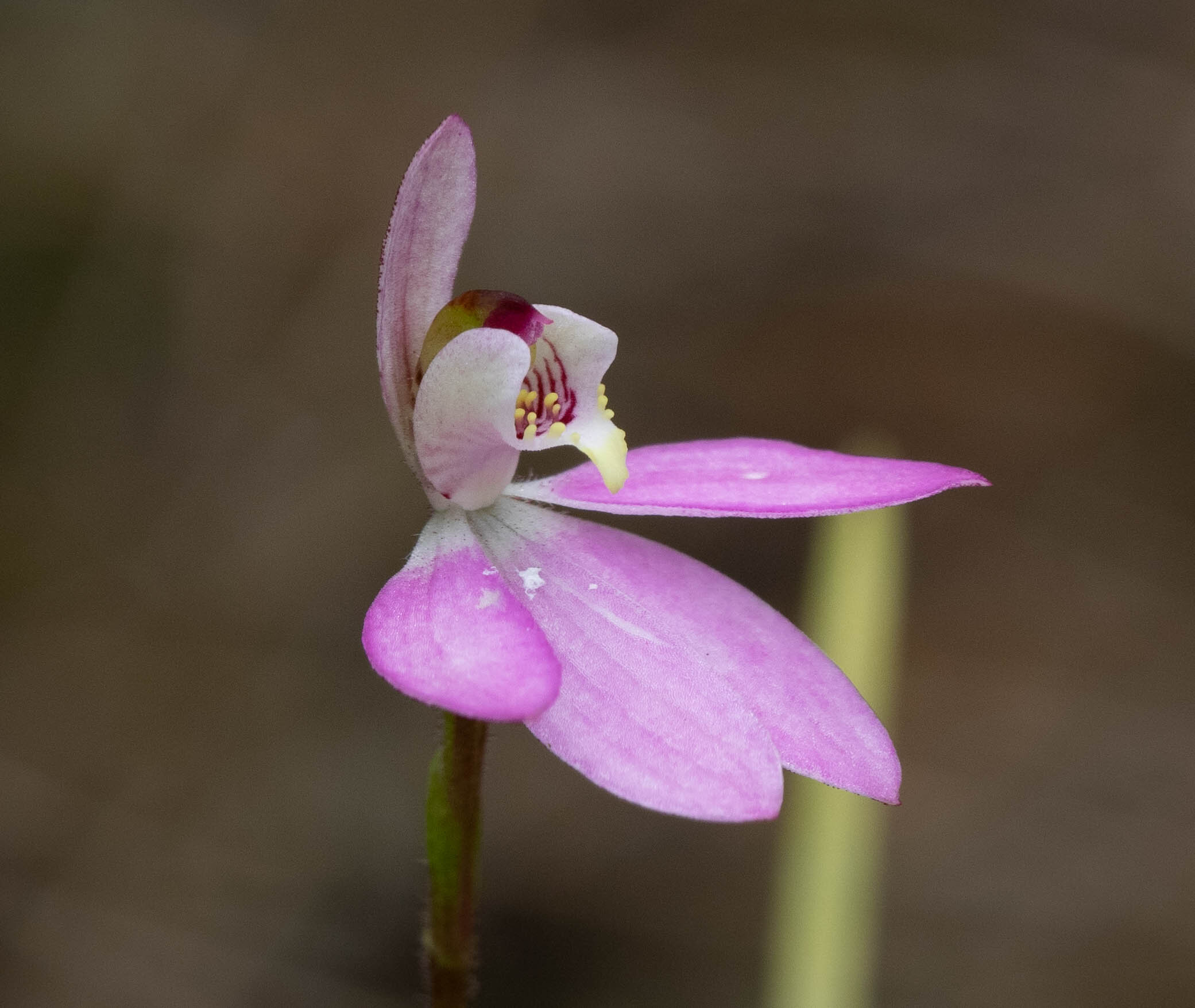

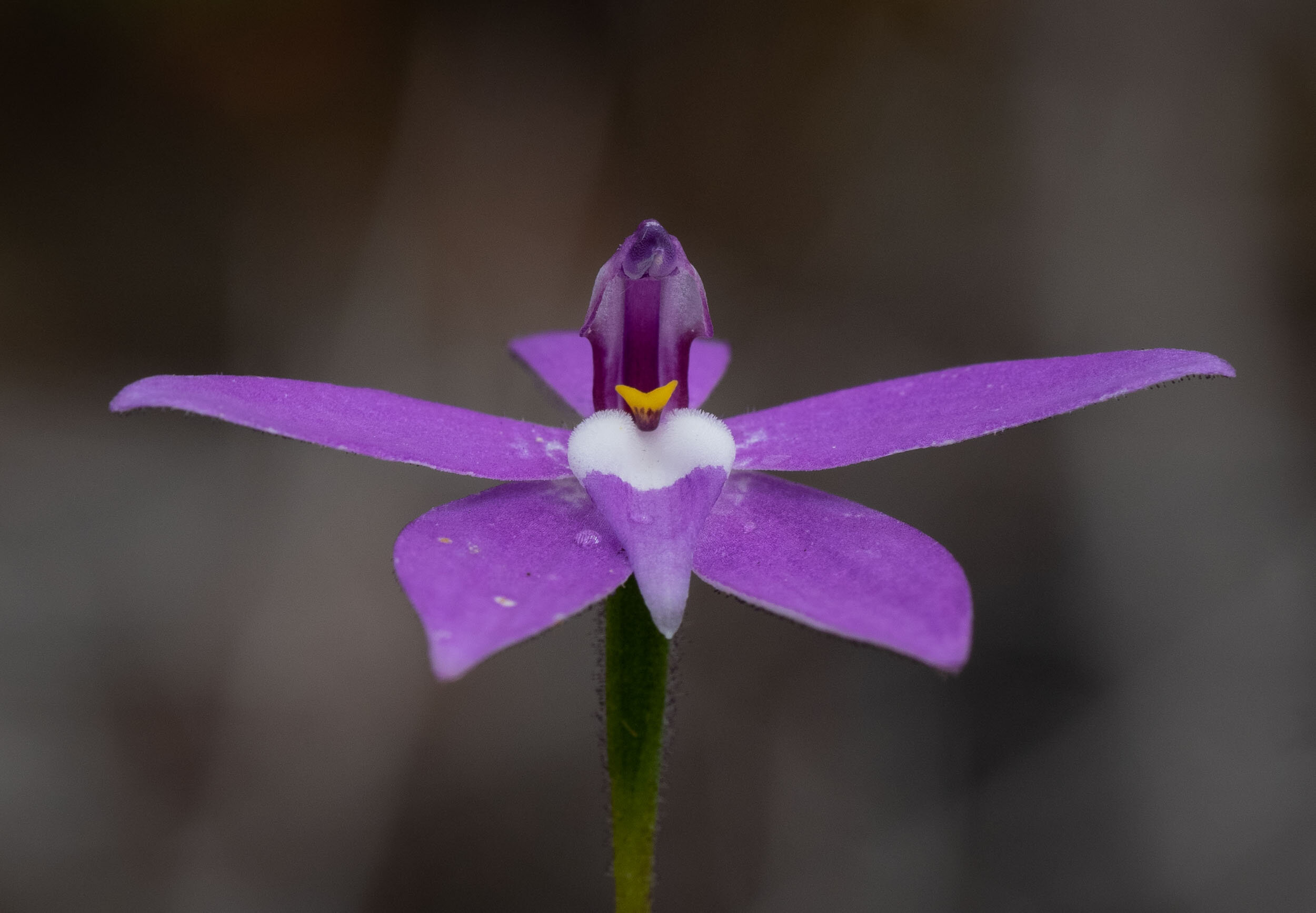
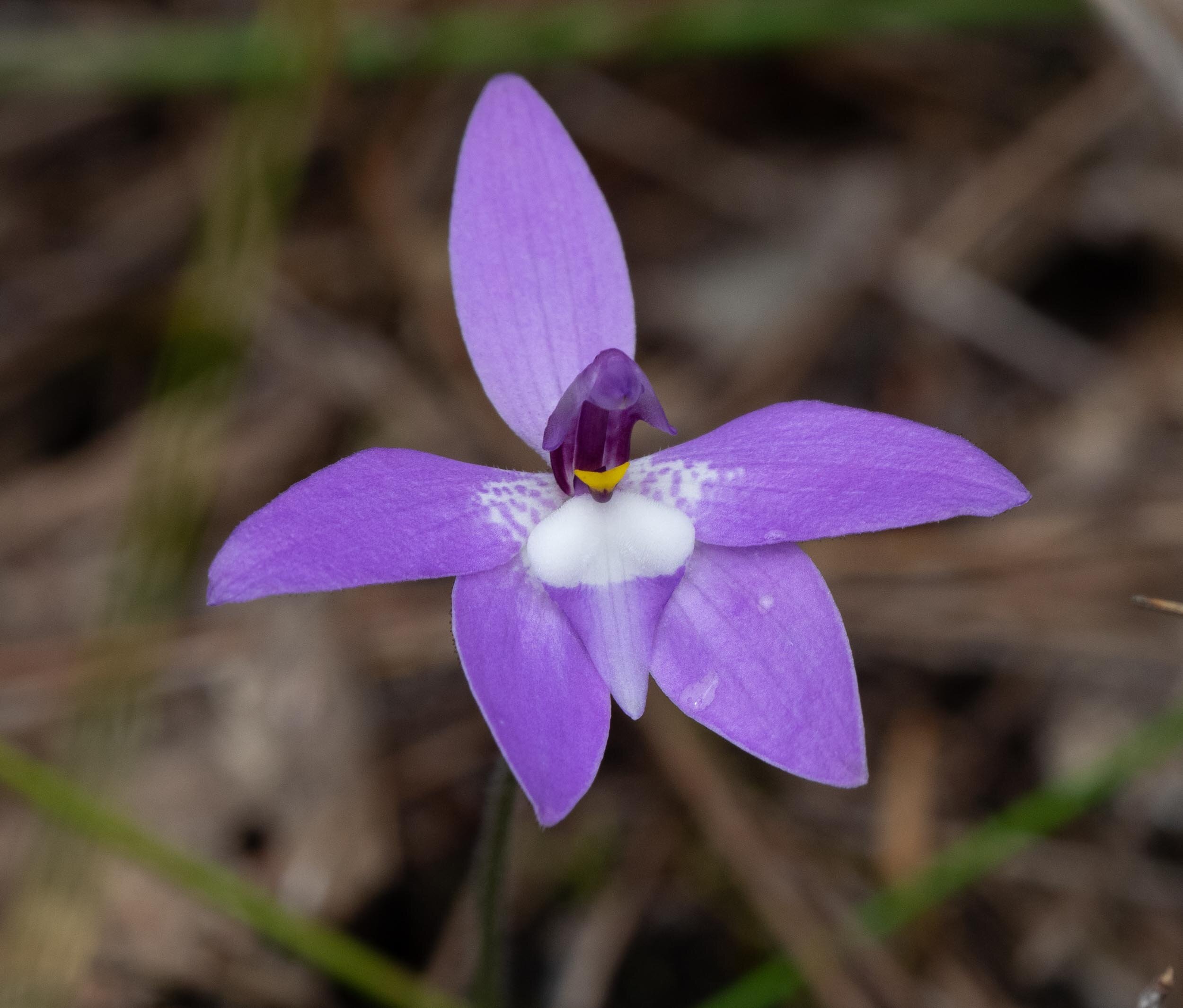
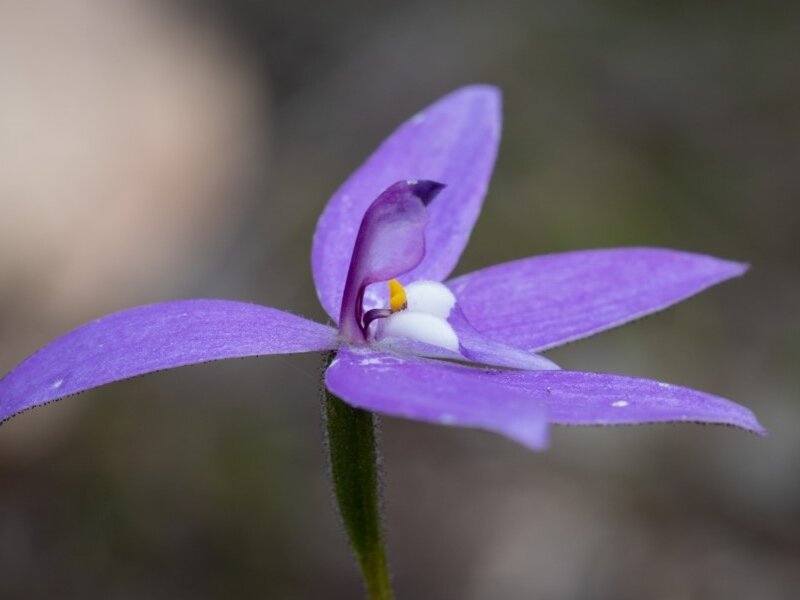
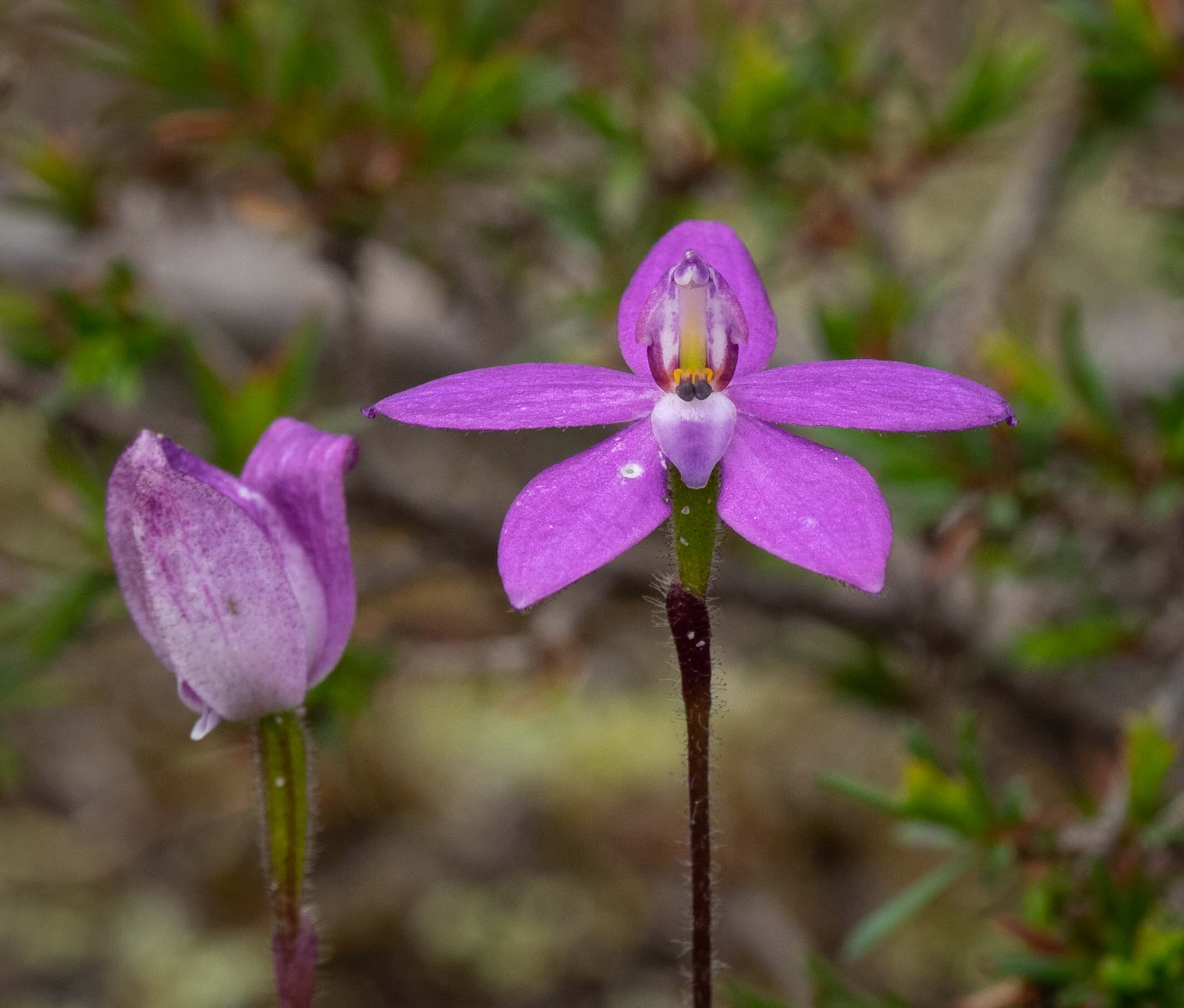
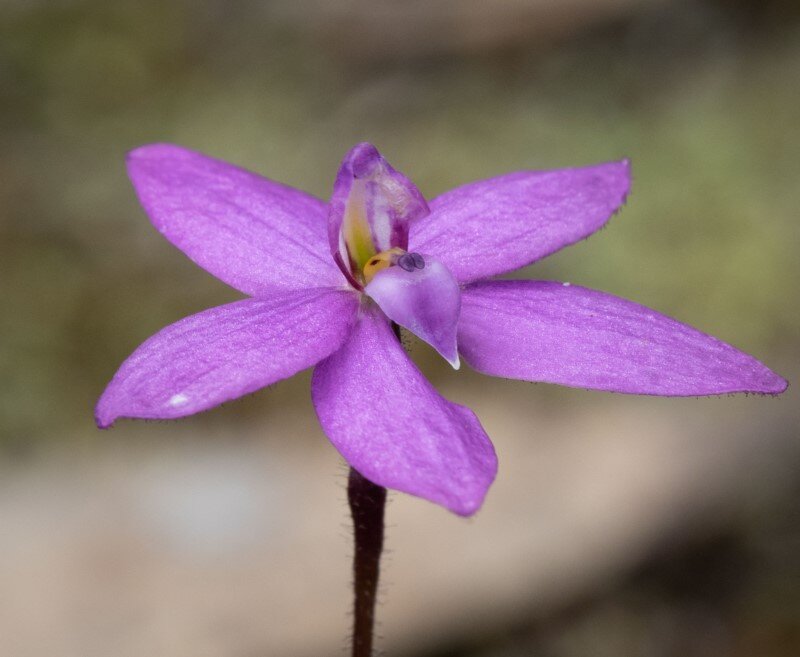
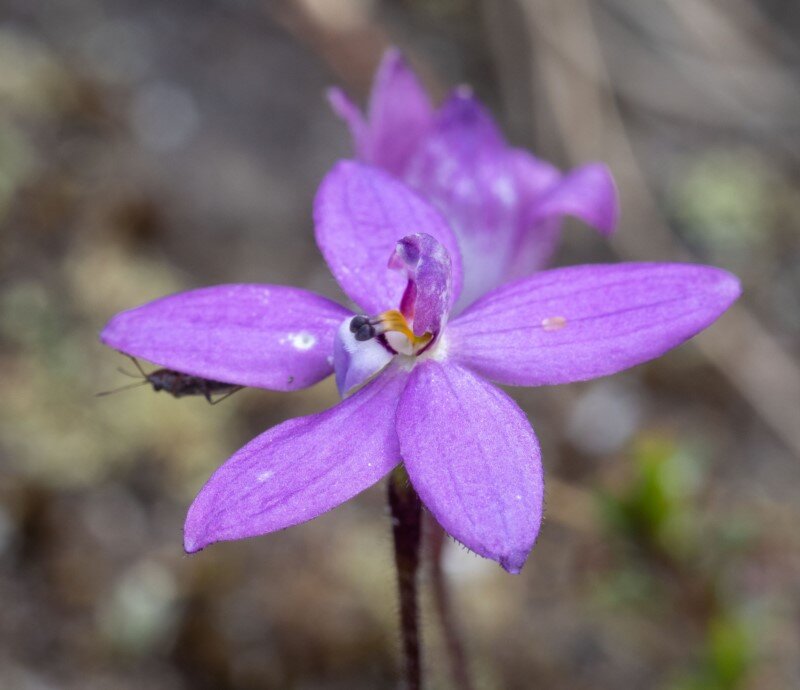
There were also many stems with unopened buds of what we believe are Sun Orchids, Thelymitra spp.
The flowers of Sun Orchids only open on warm, sunny days. We plan to return to this spot soon to witness what promises to be a spectacular display.
Postscript
The ideal, warm, sunny conditions arrived a few days later, so we made a return visit to the helipad. As we hoped, several of the sun orchids were putting on a show - along with a Tiger Orchid and a Red Beard Orchid.
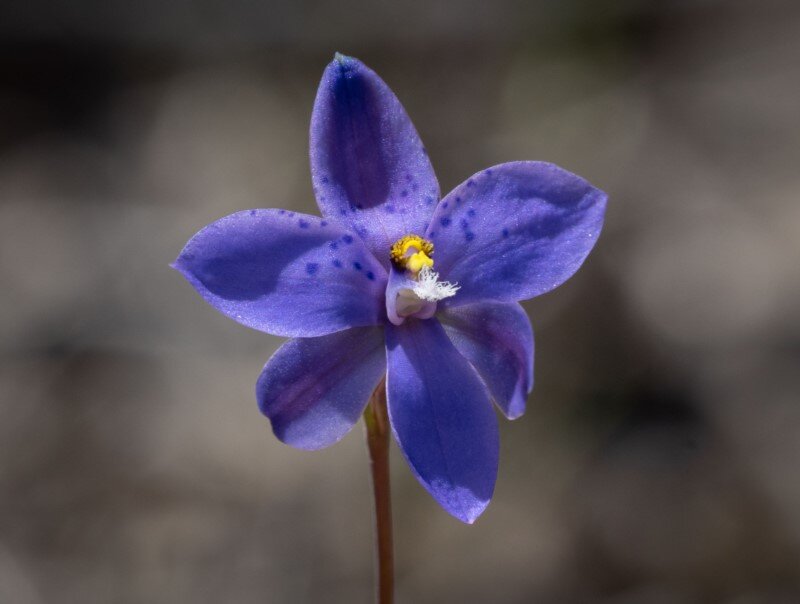
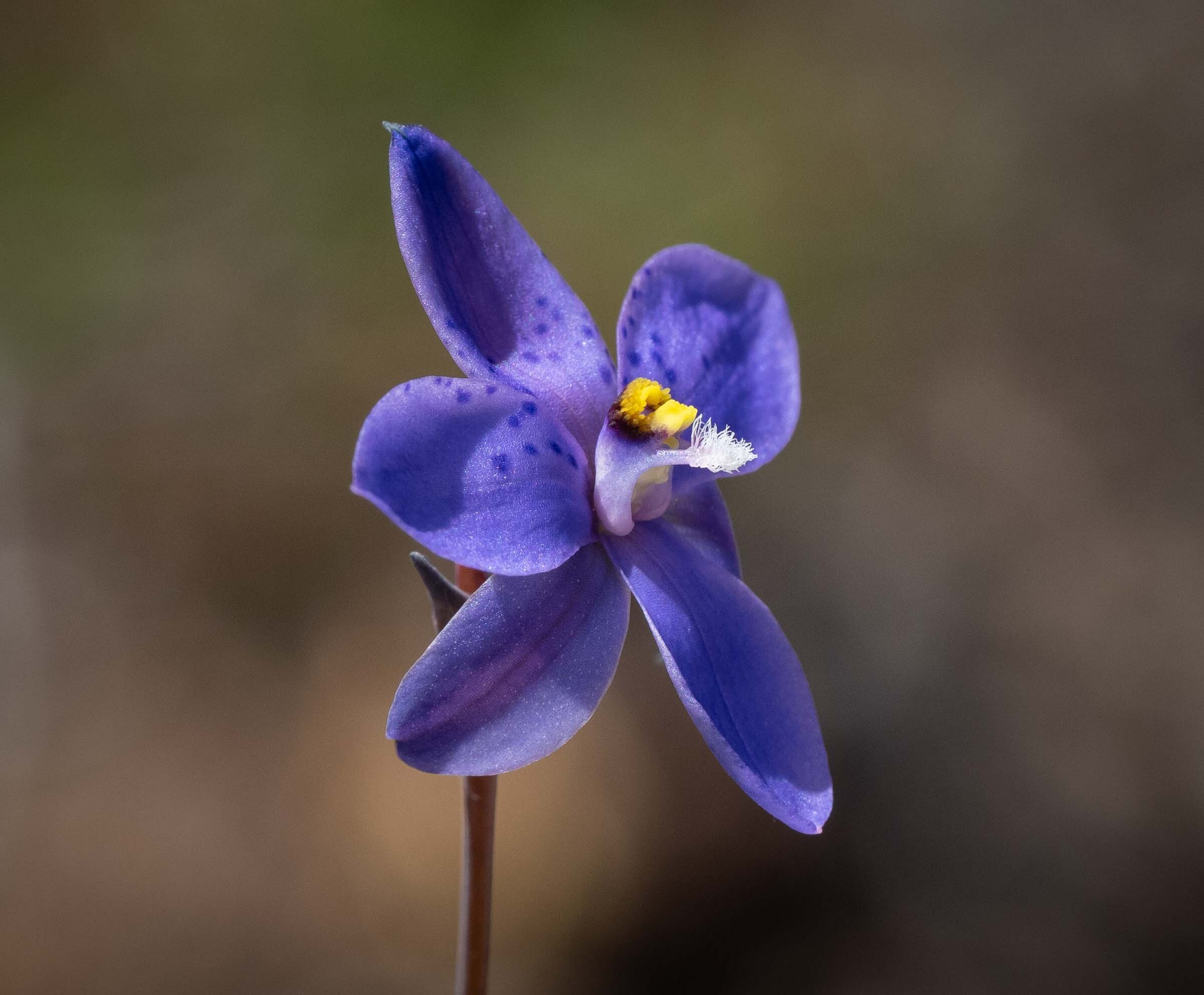
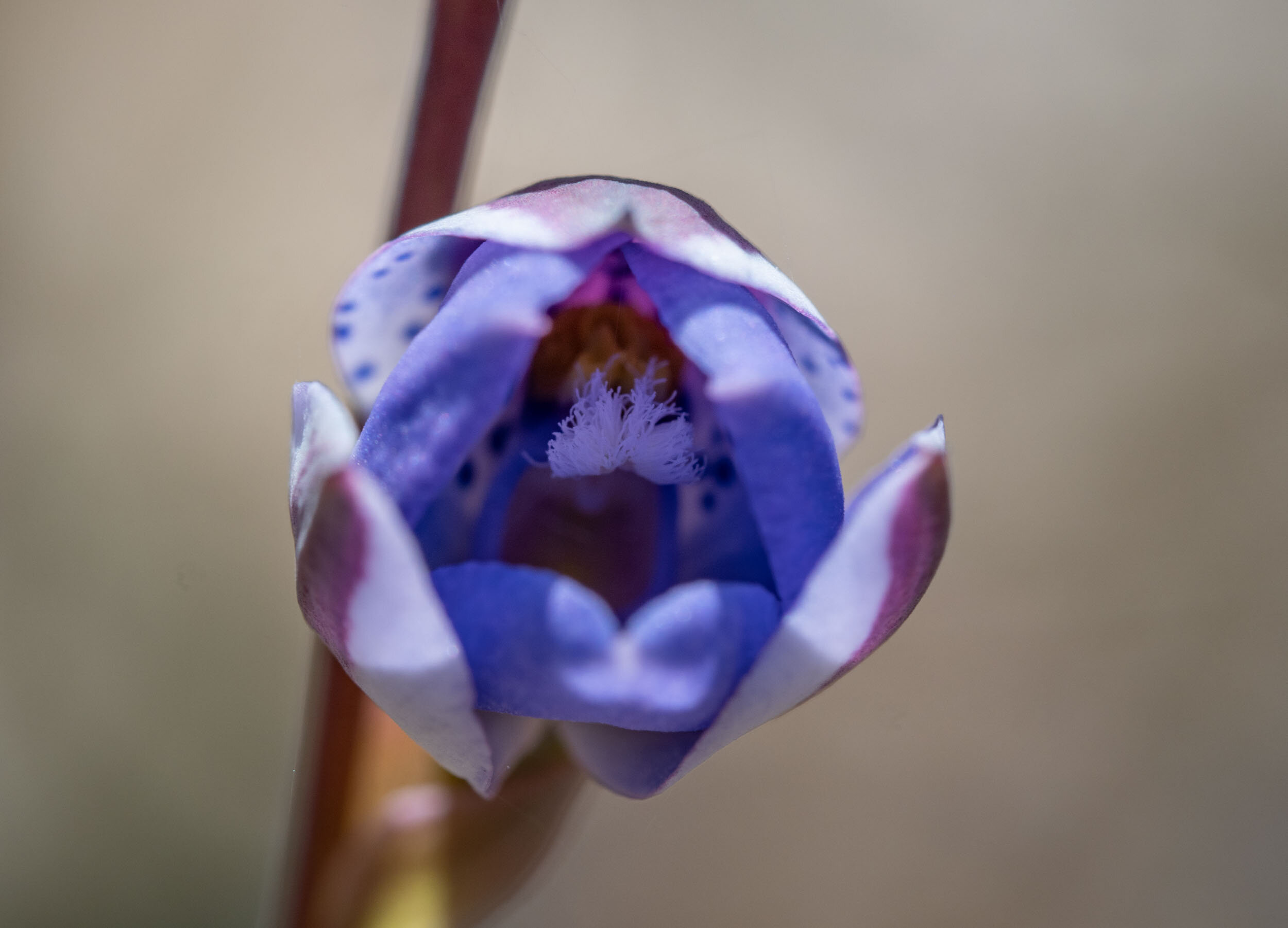
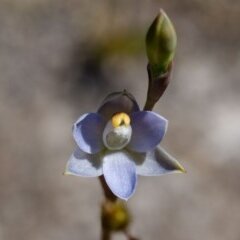
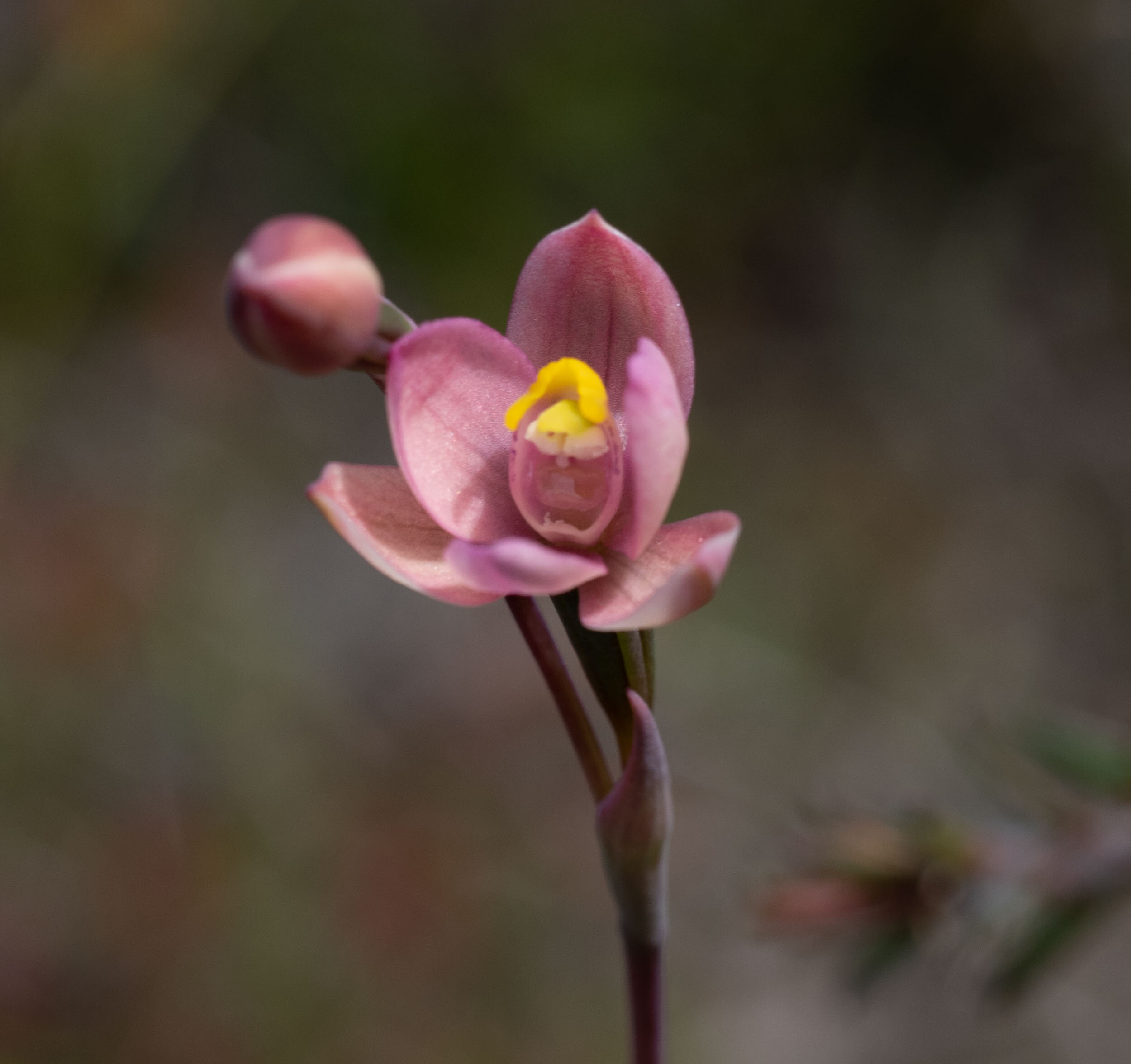
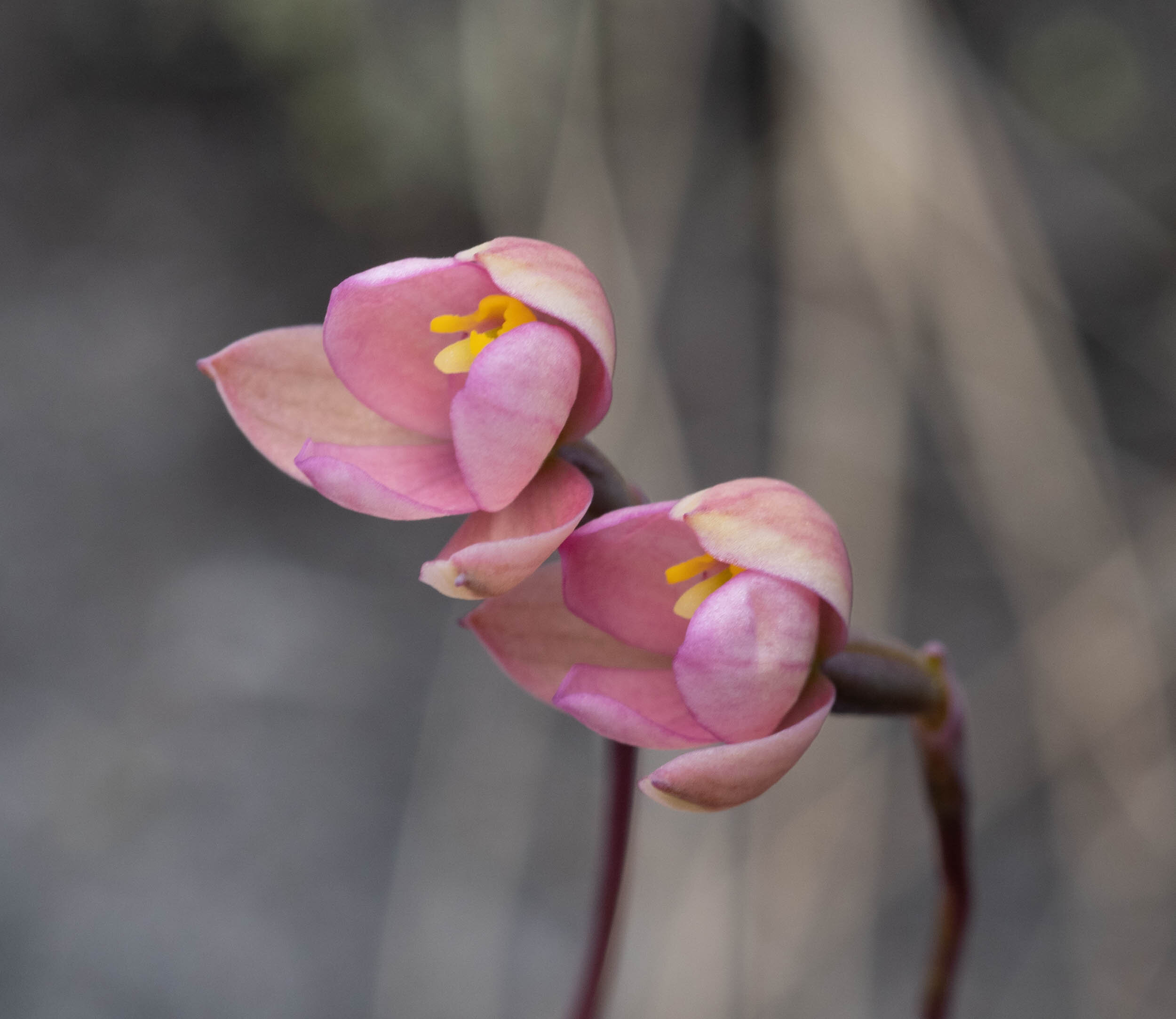
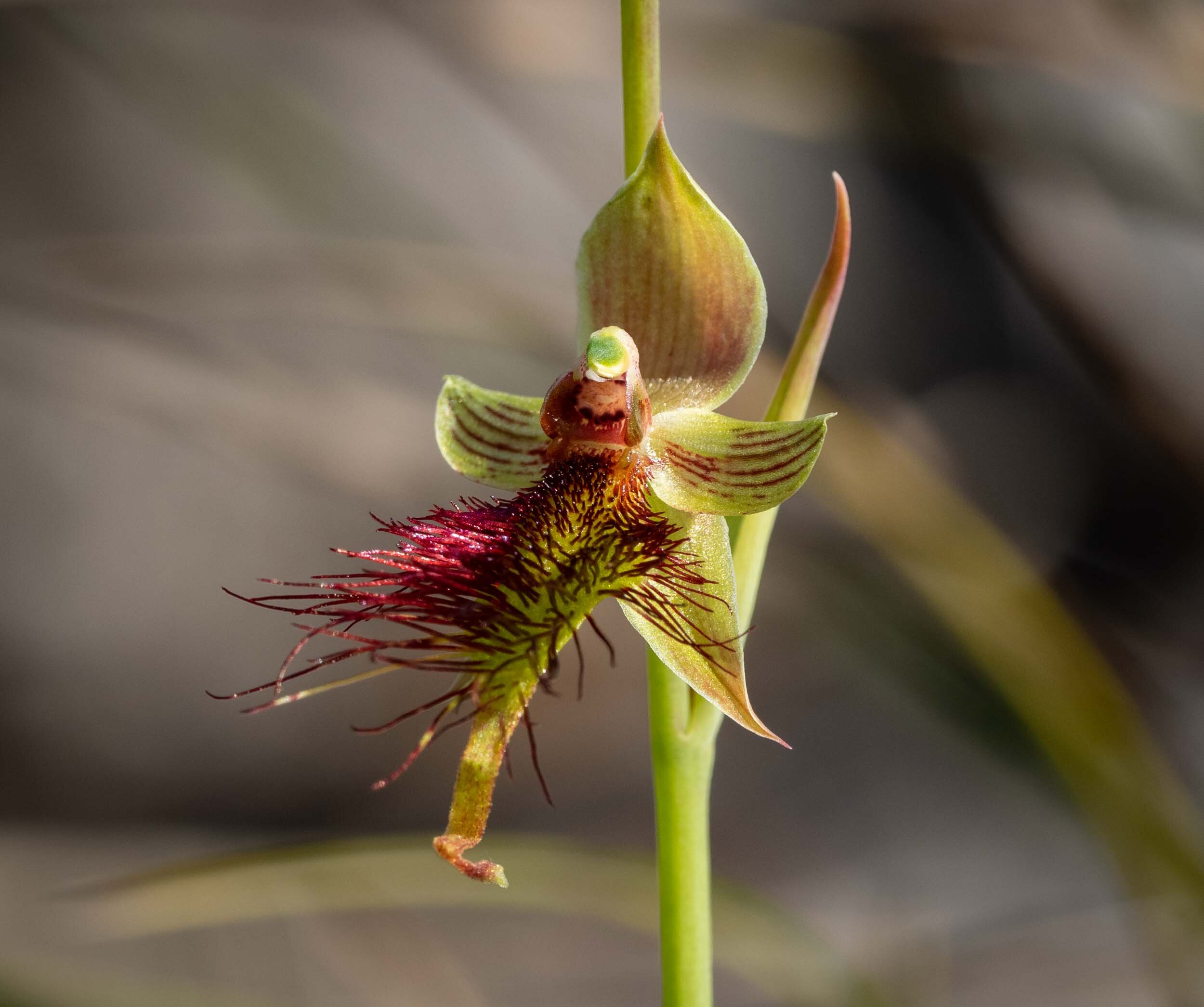
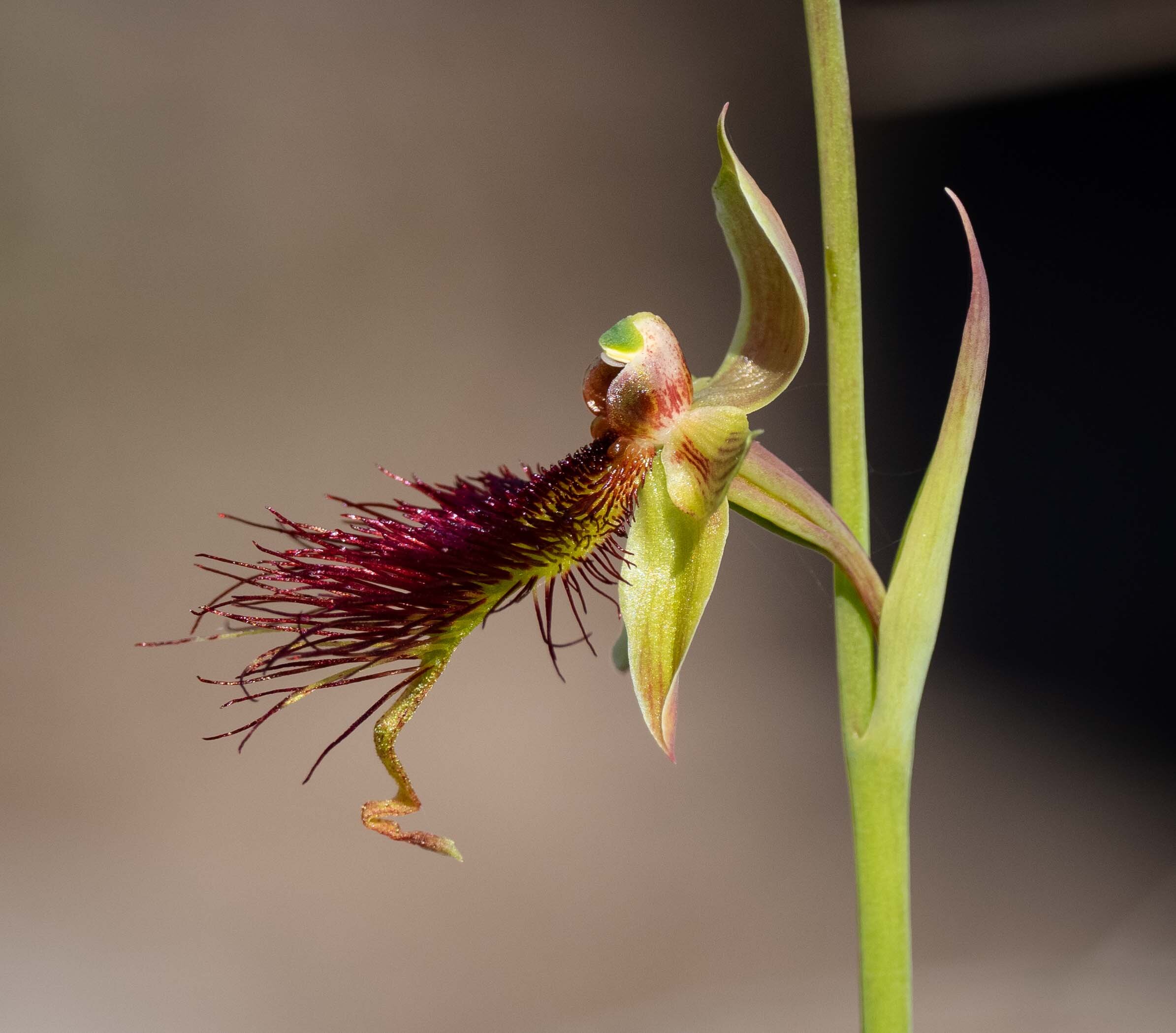
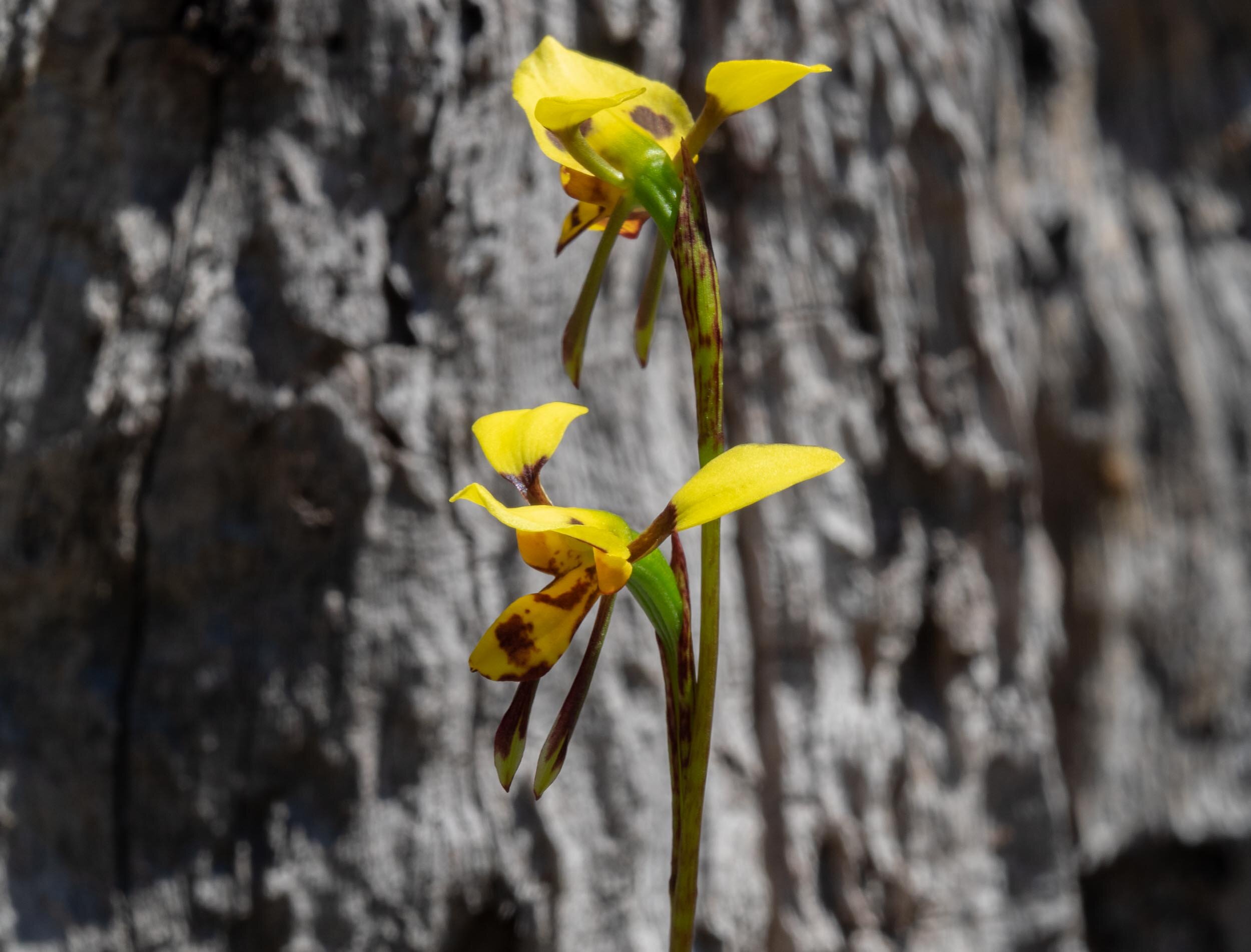
A host of insects were seen feeding from the opened flowers. The Coast Coral-heath in particular was a magnet for beetles, flies and the occasional bee. Clouds of day-flying moths would take flight as we moved between the flowering plants, then land and disappear again.
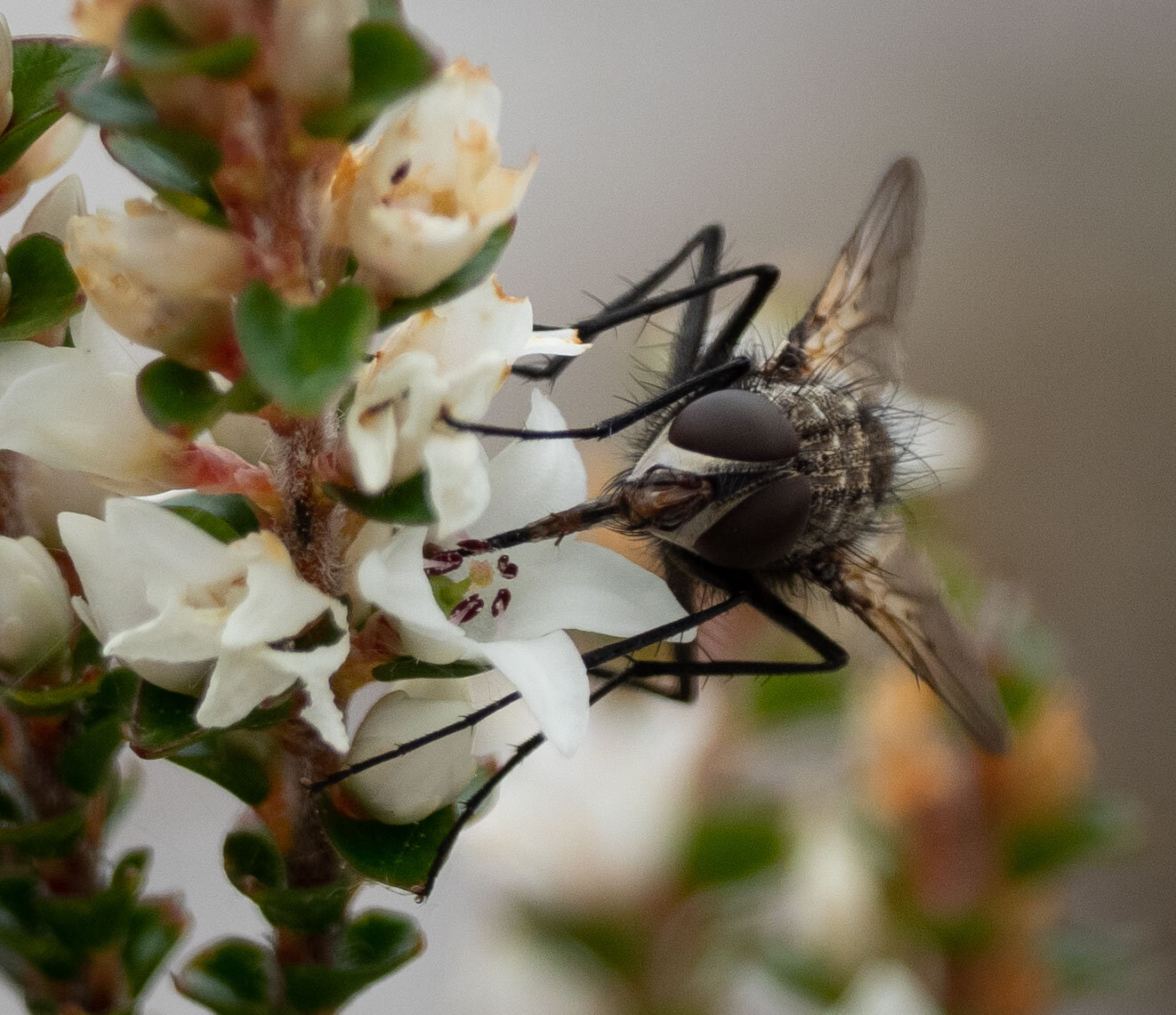
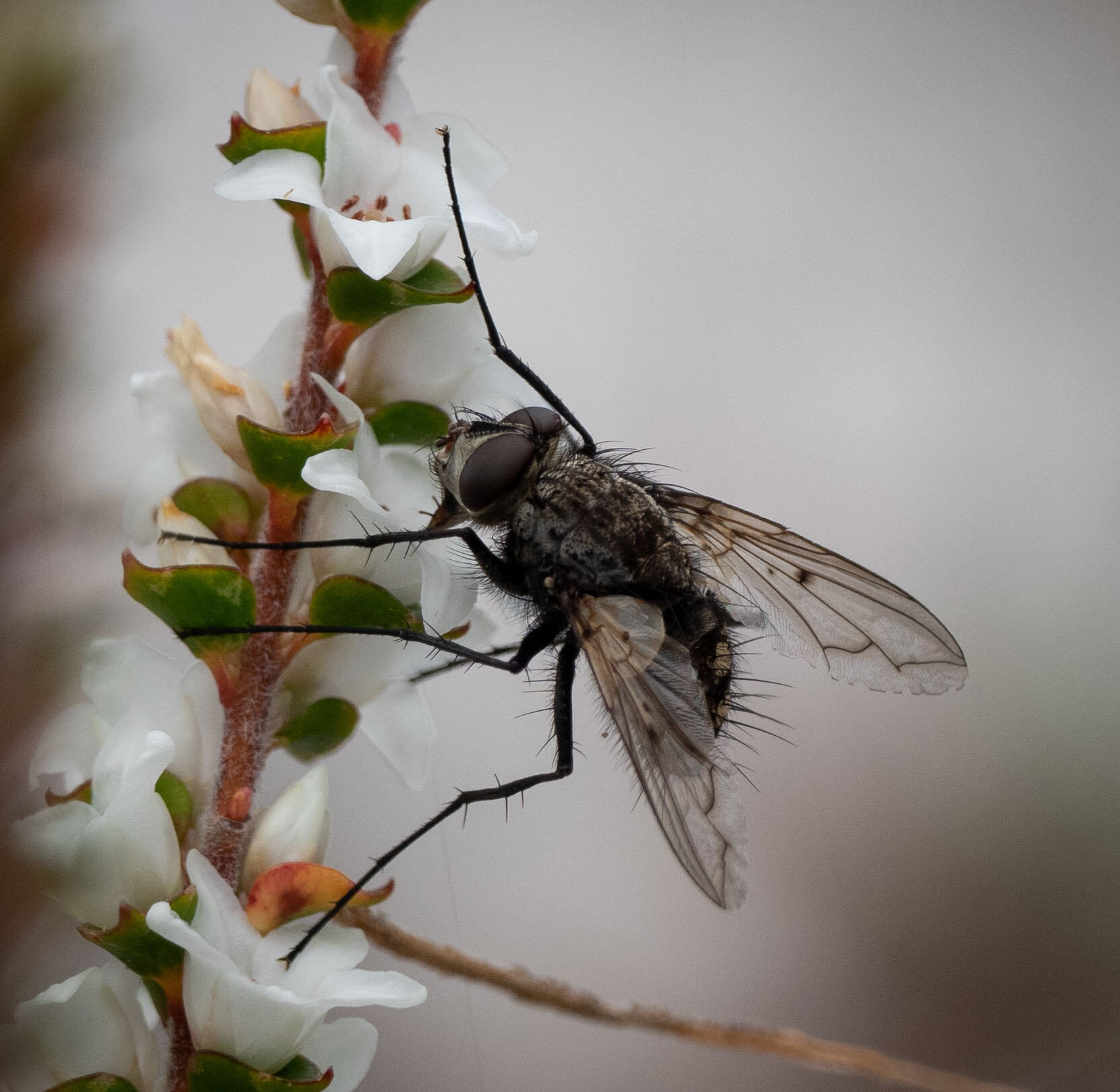

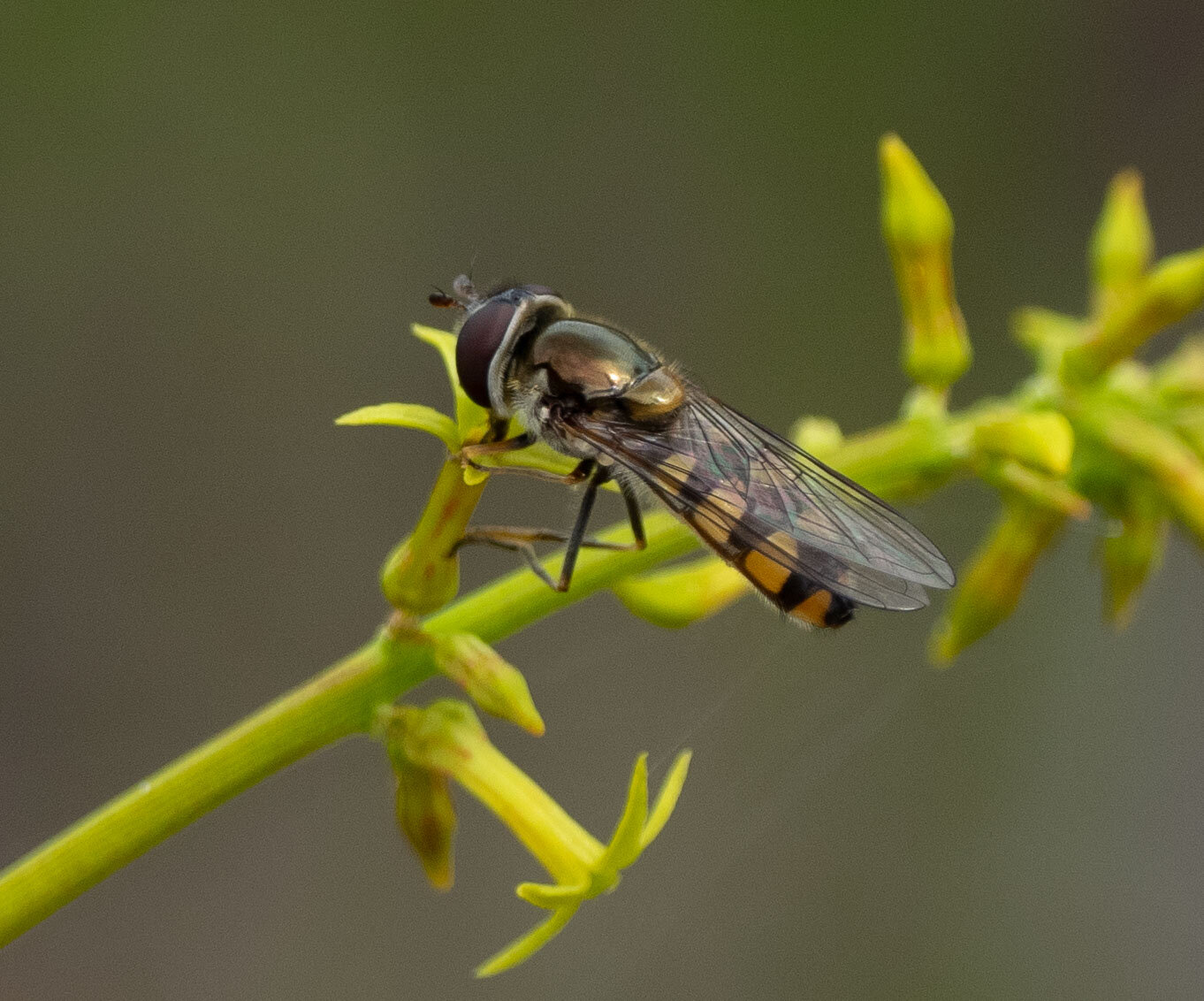
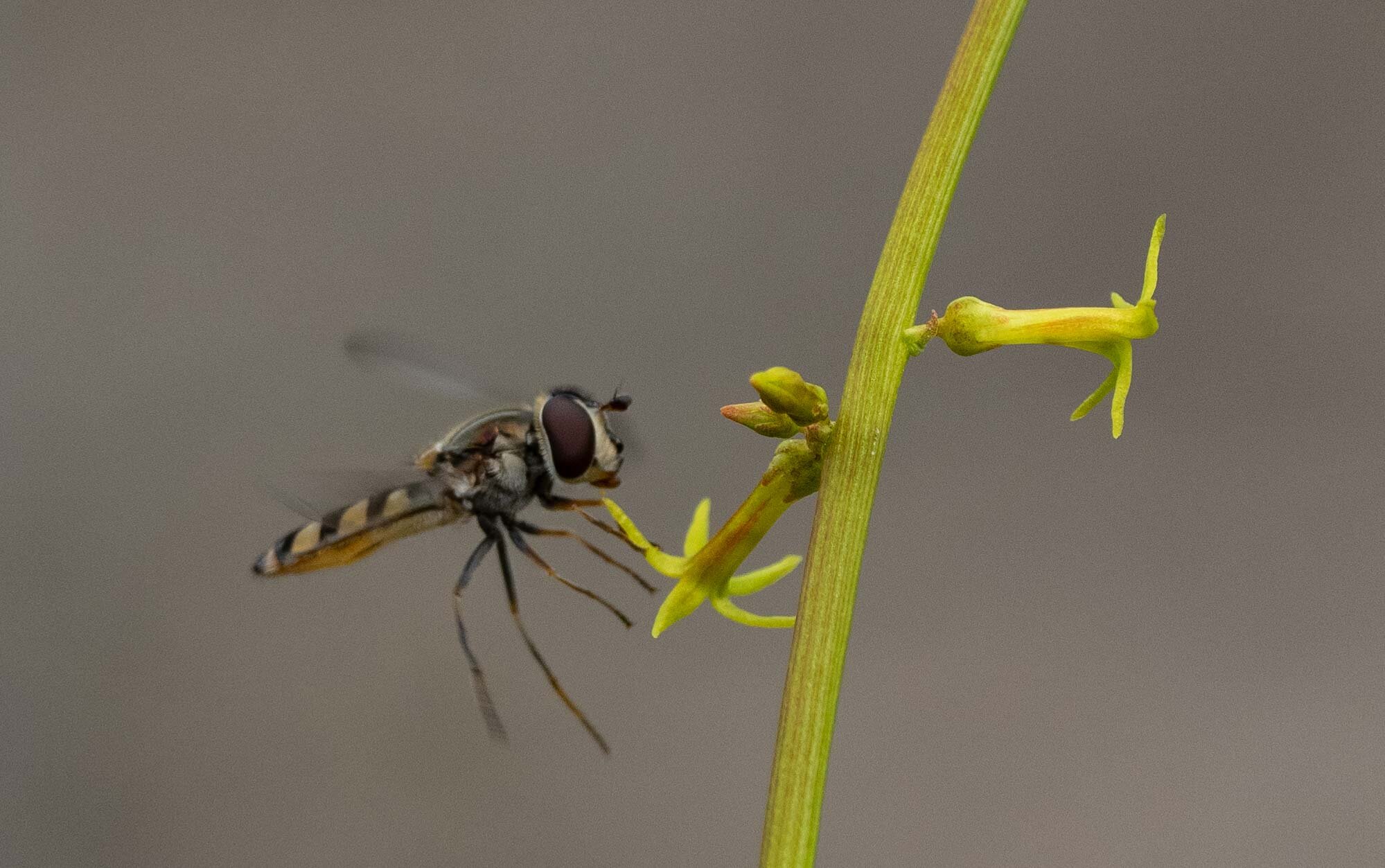
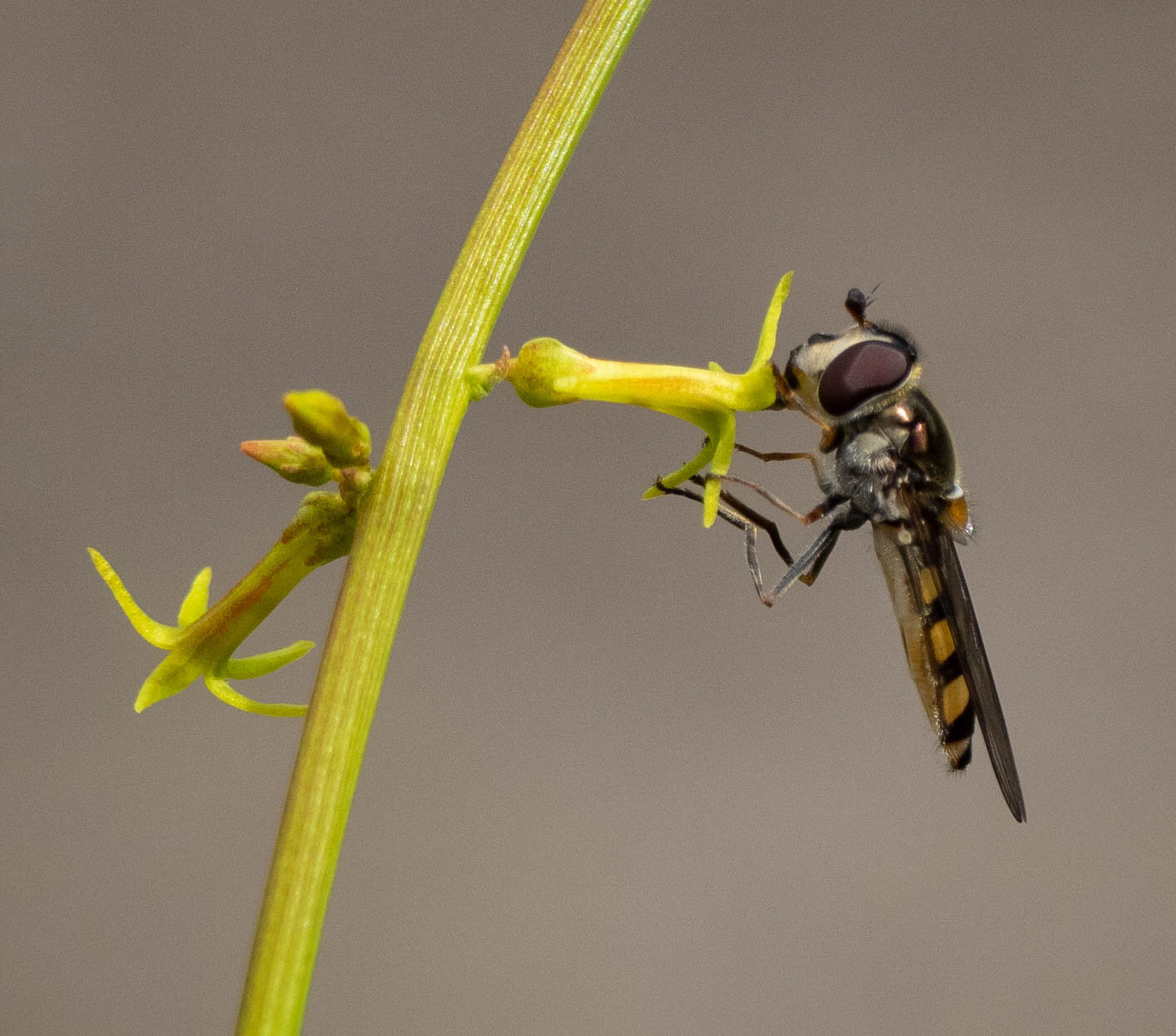
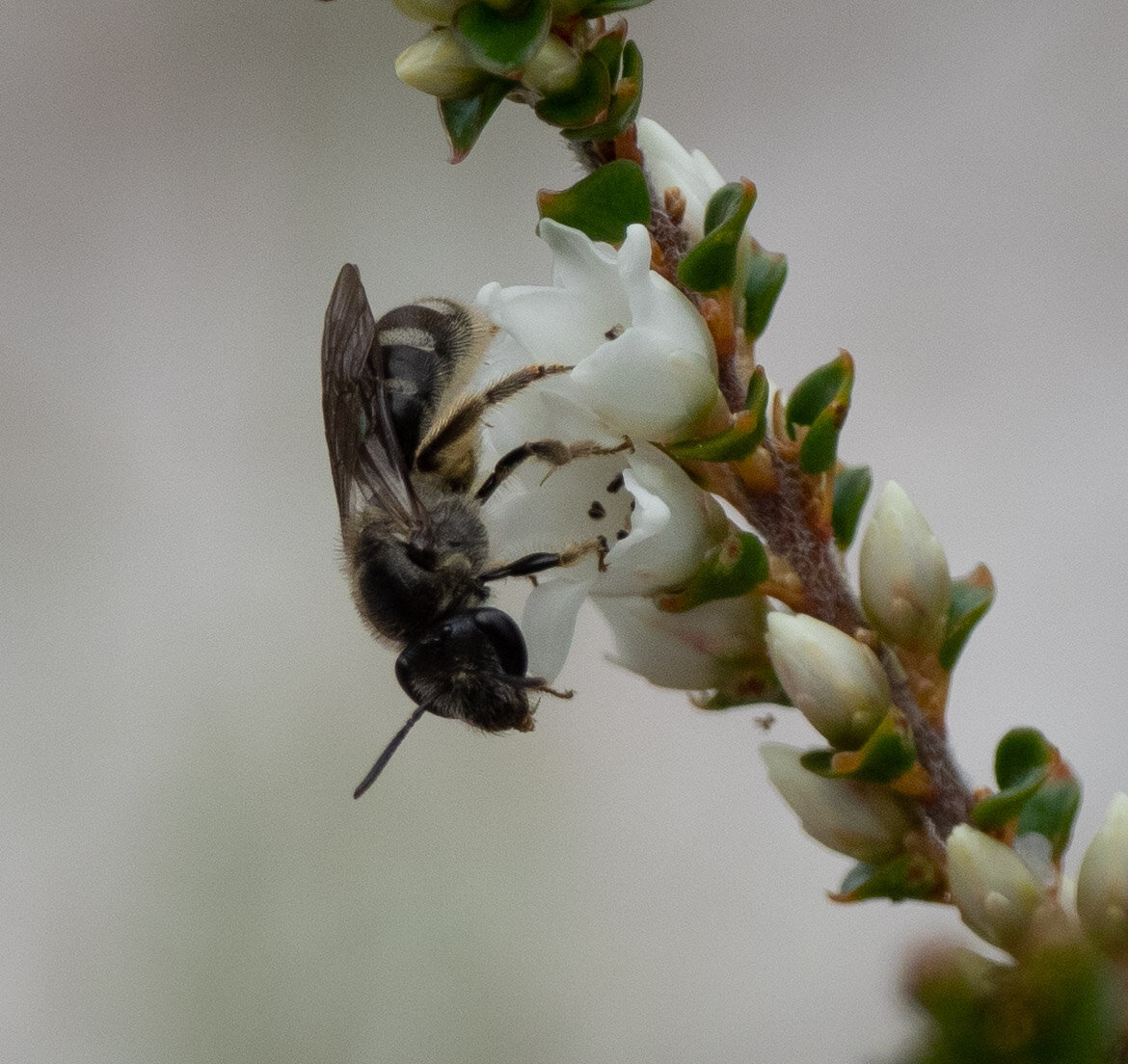

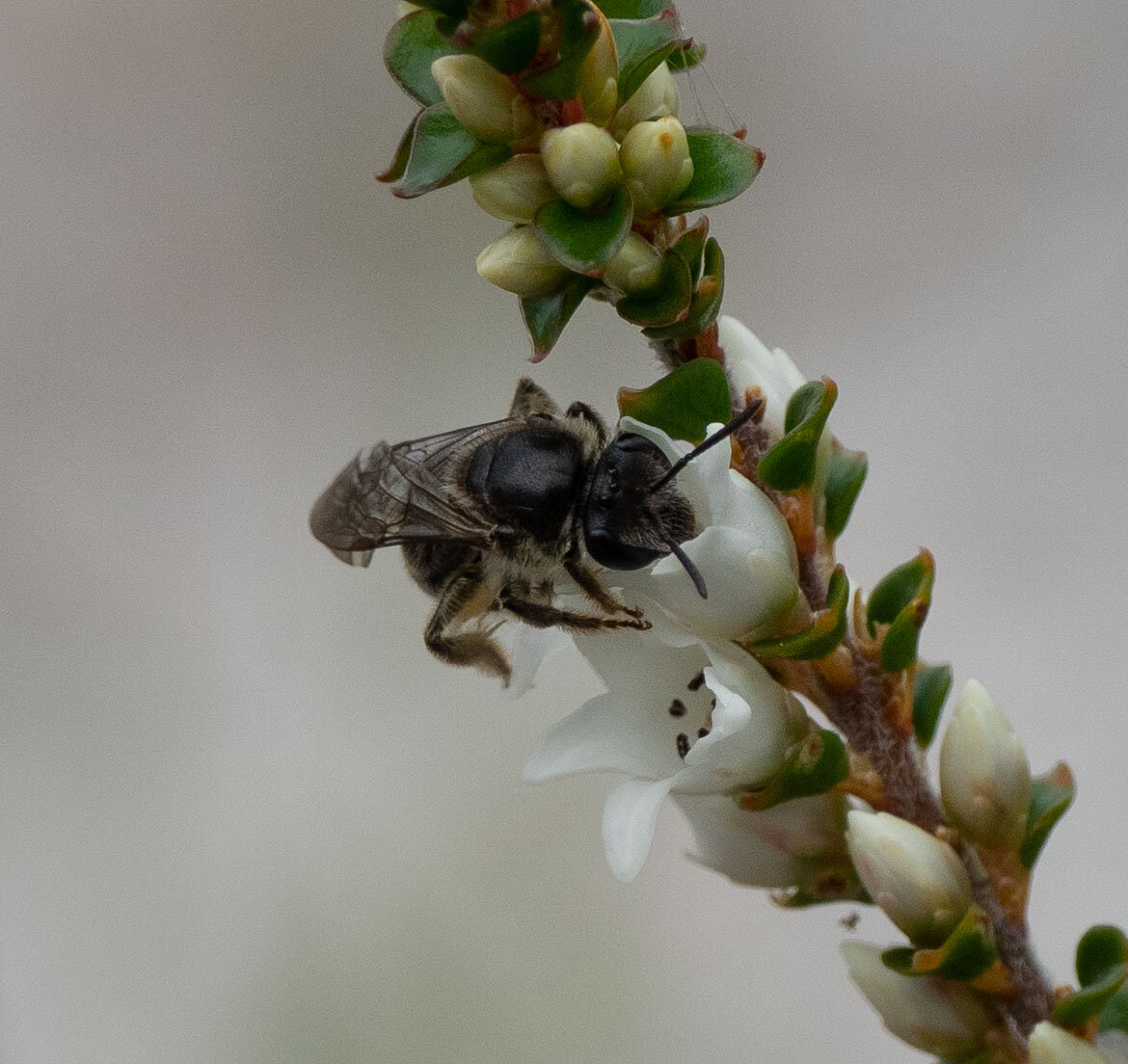
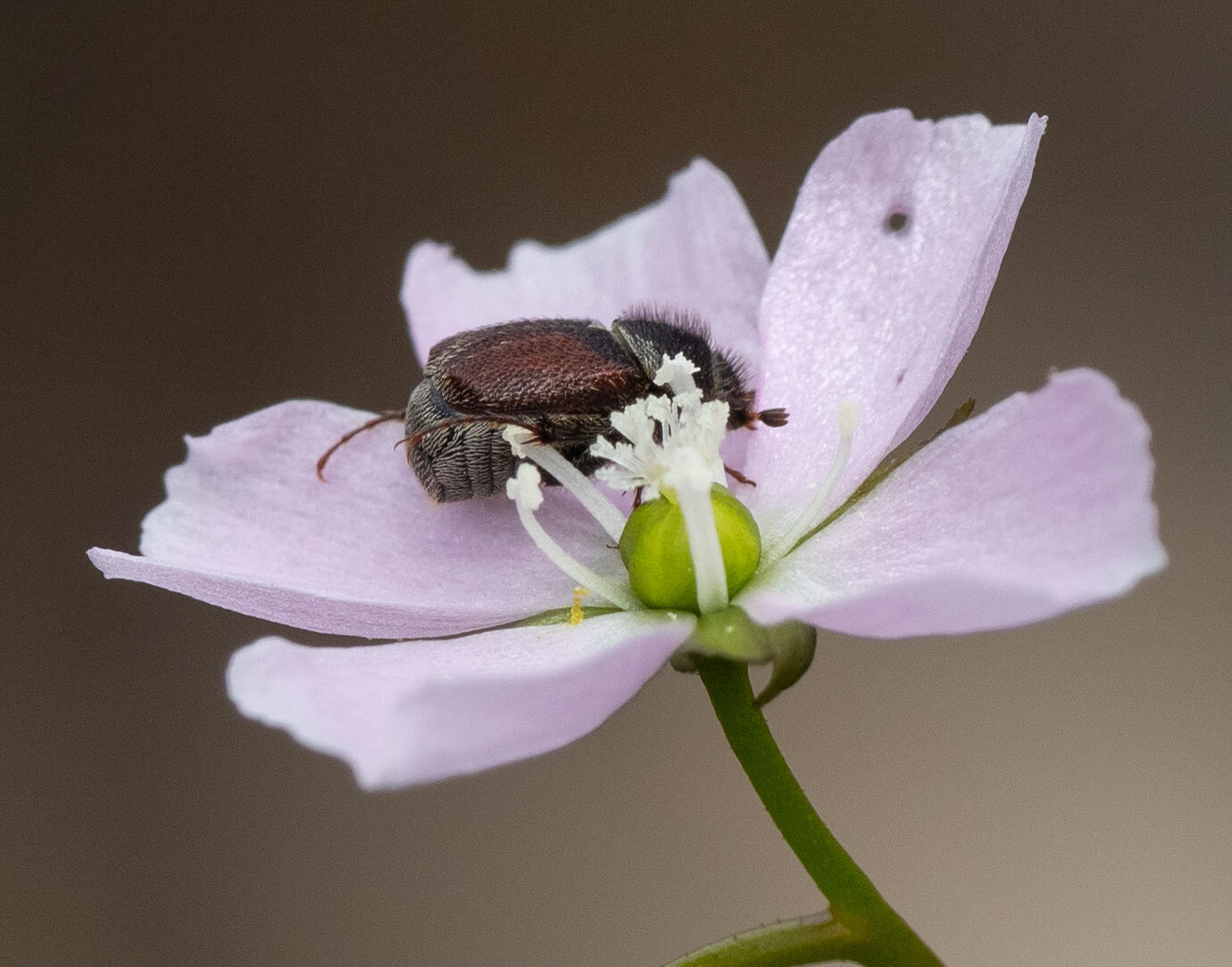
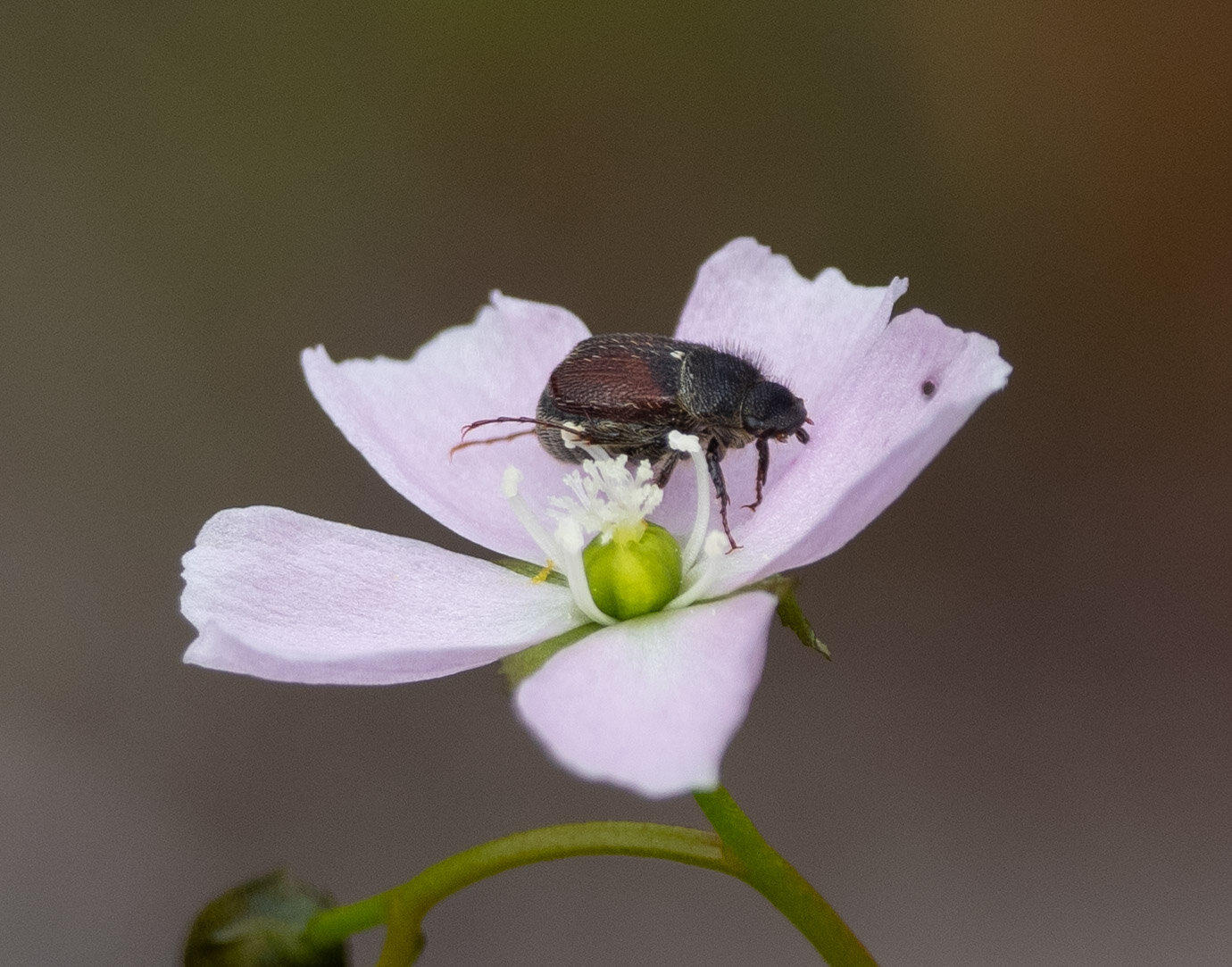
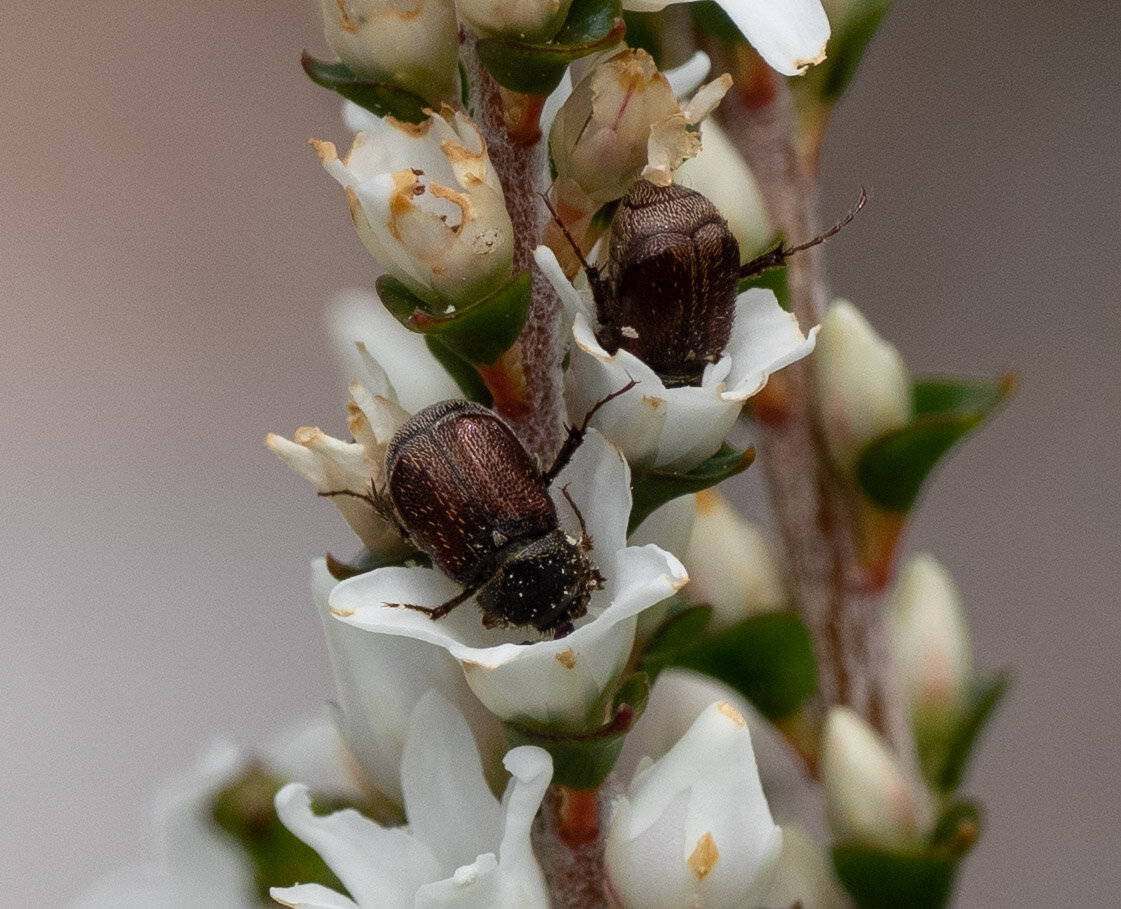
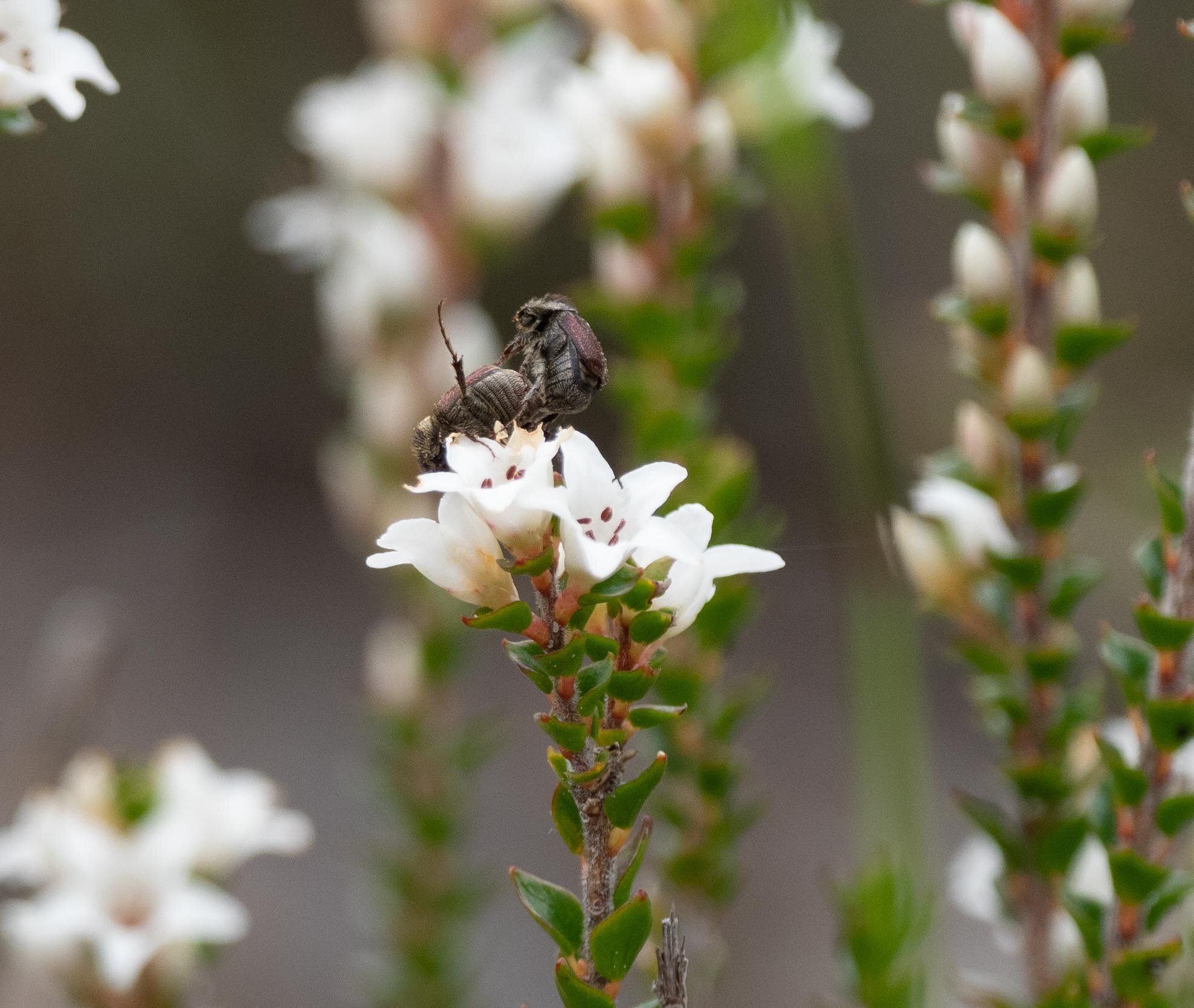
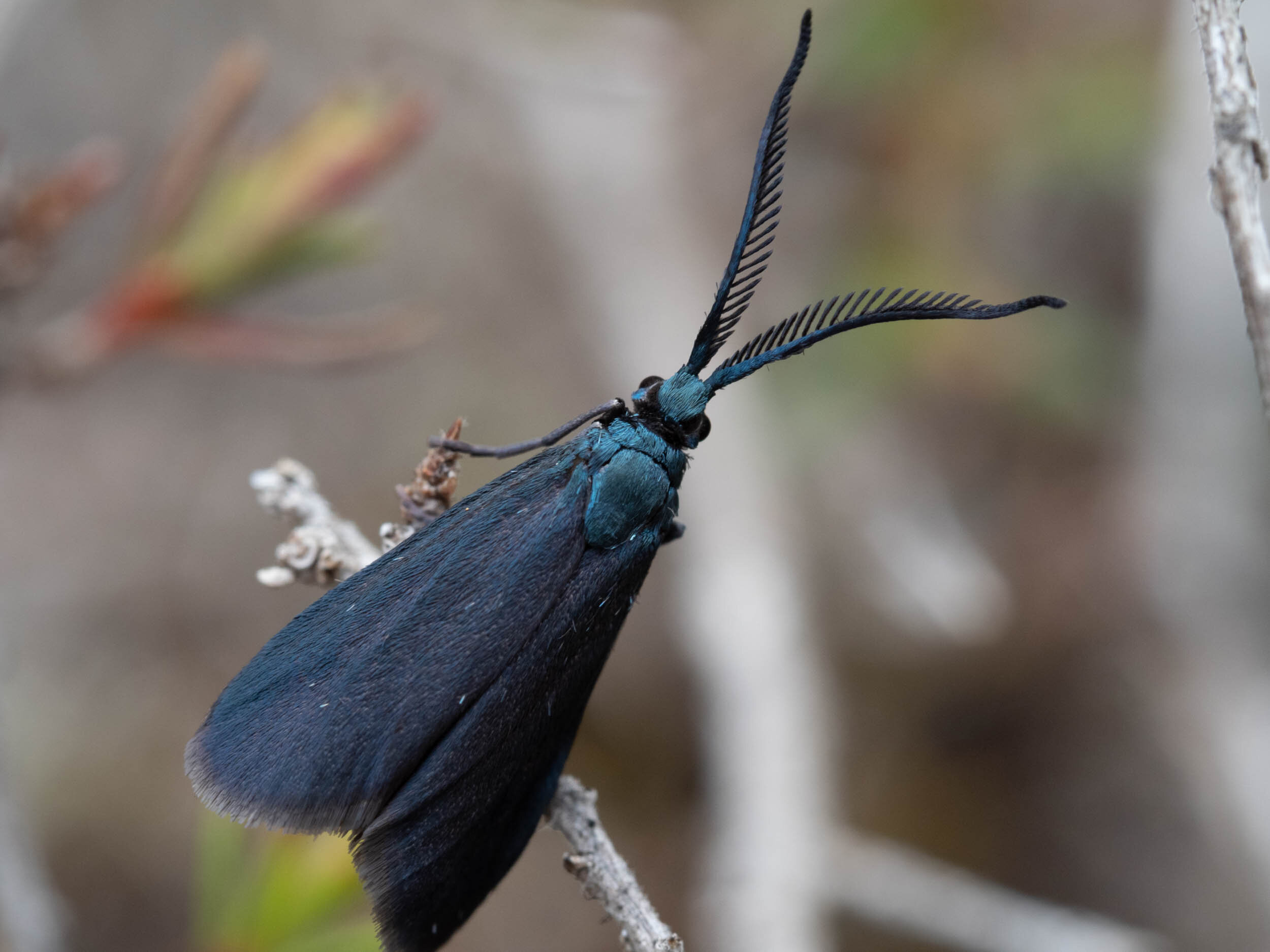
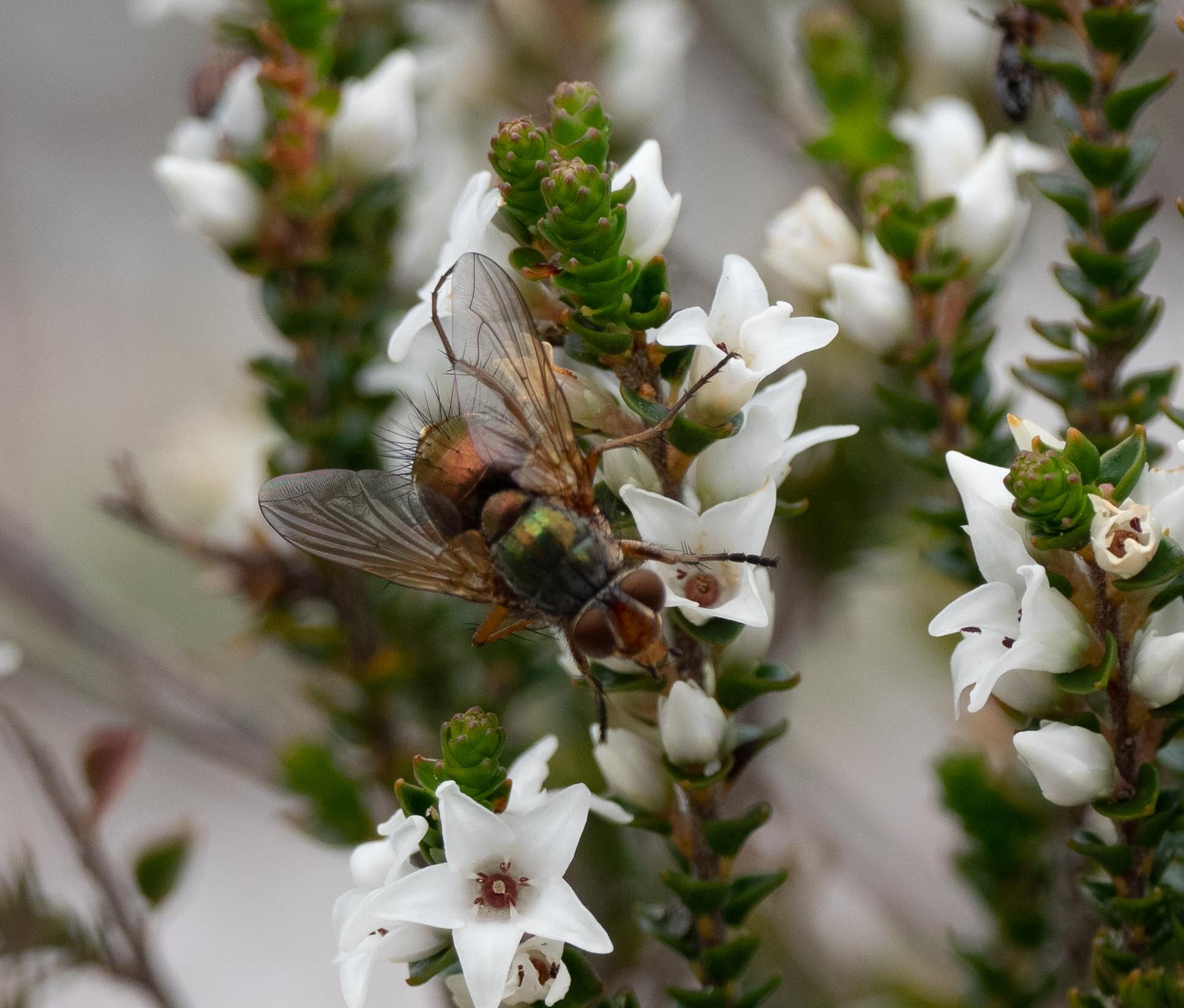
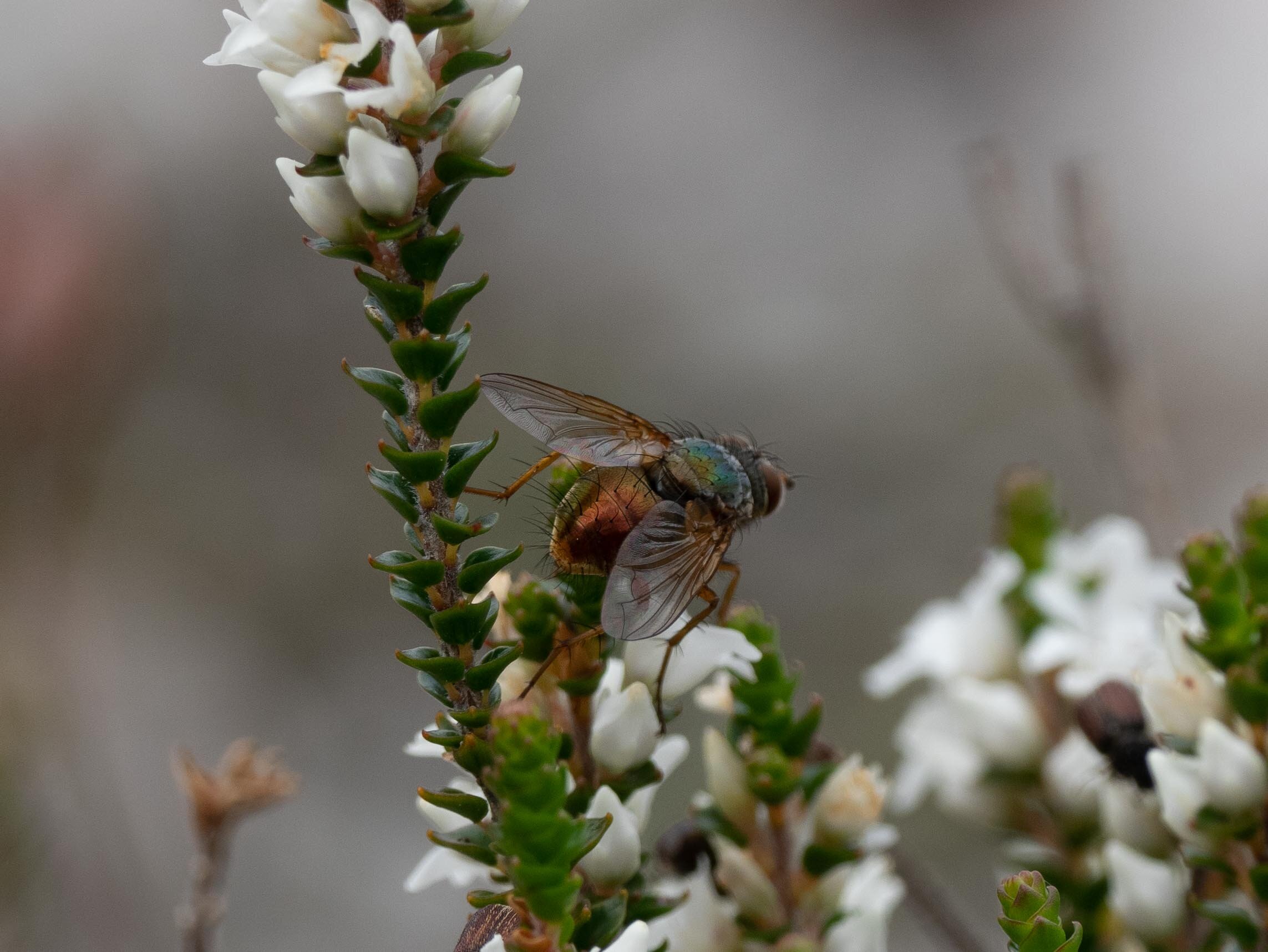
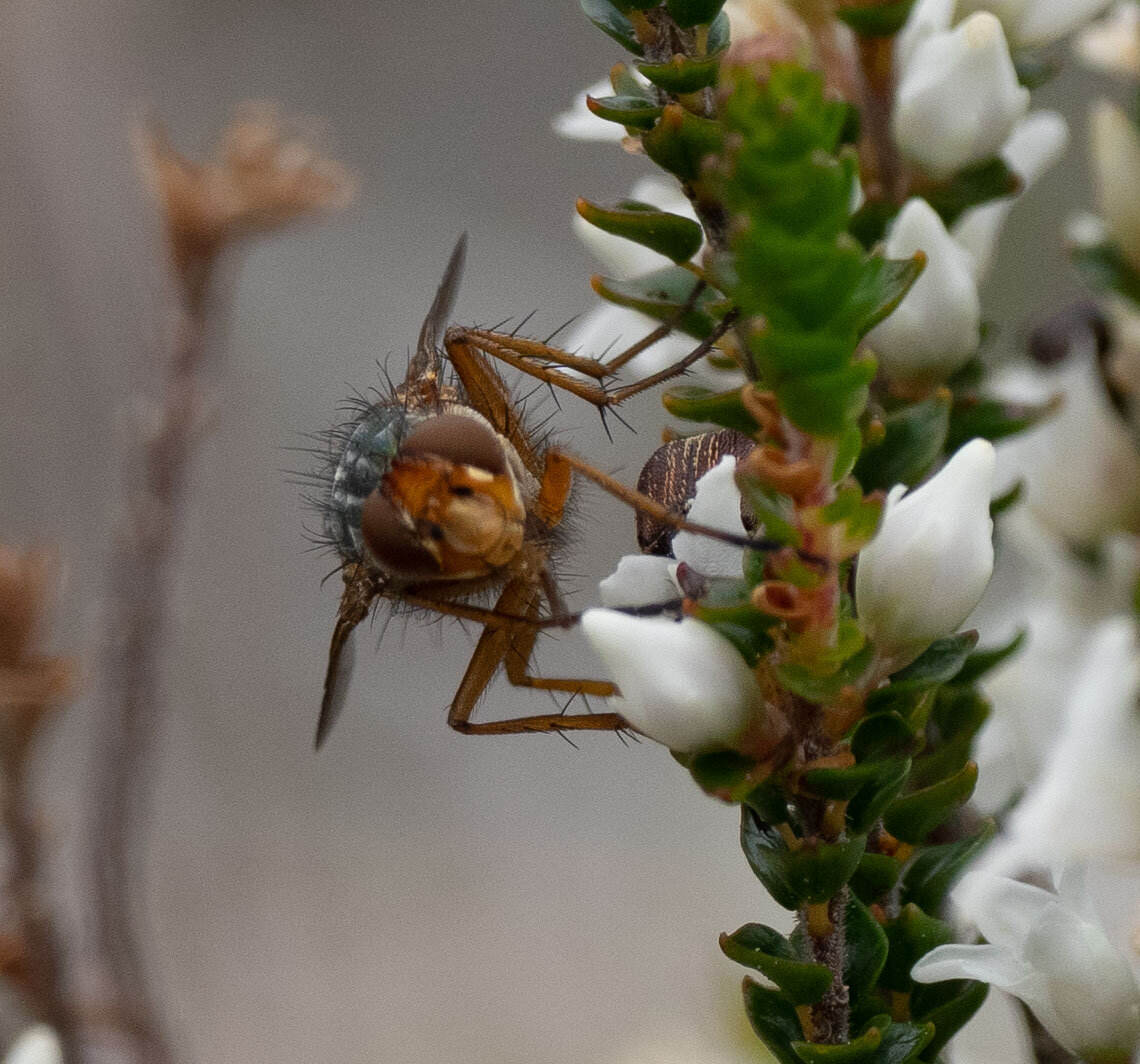
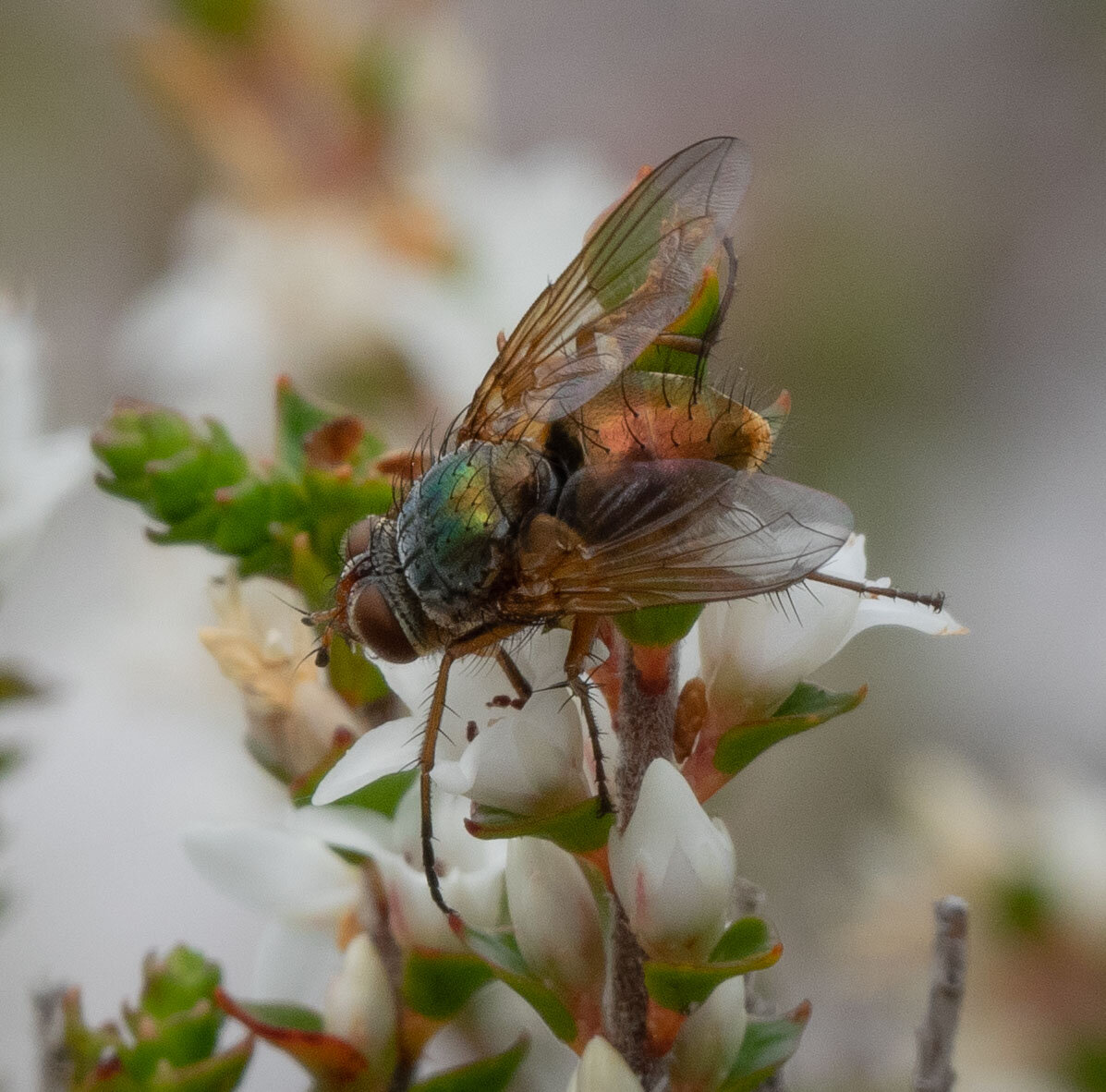
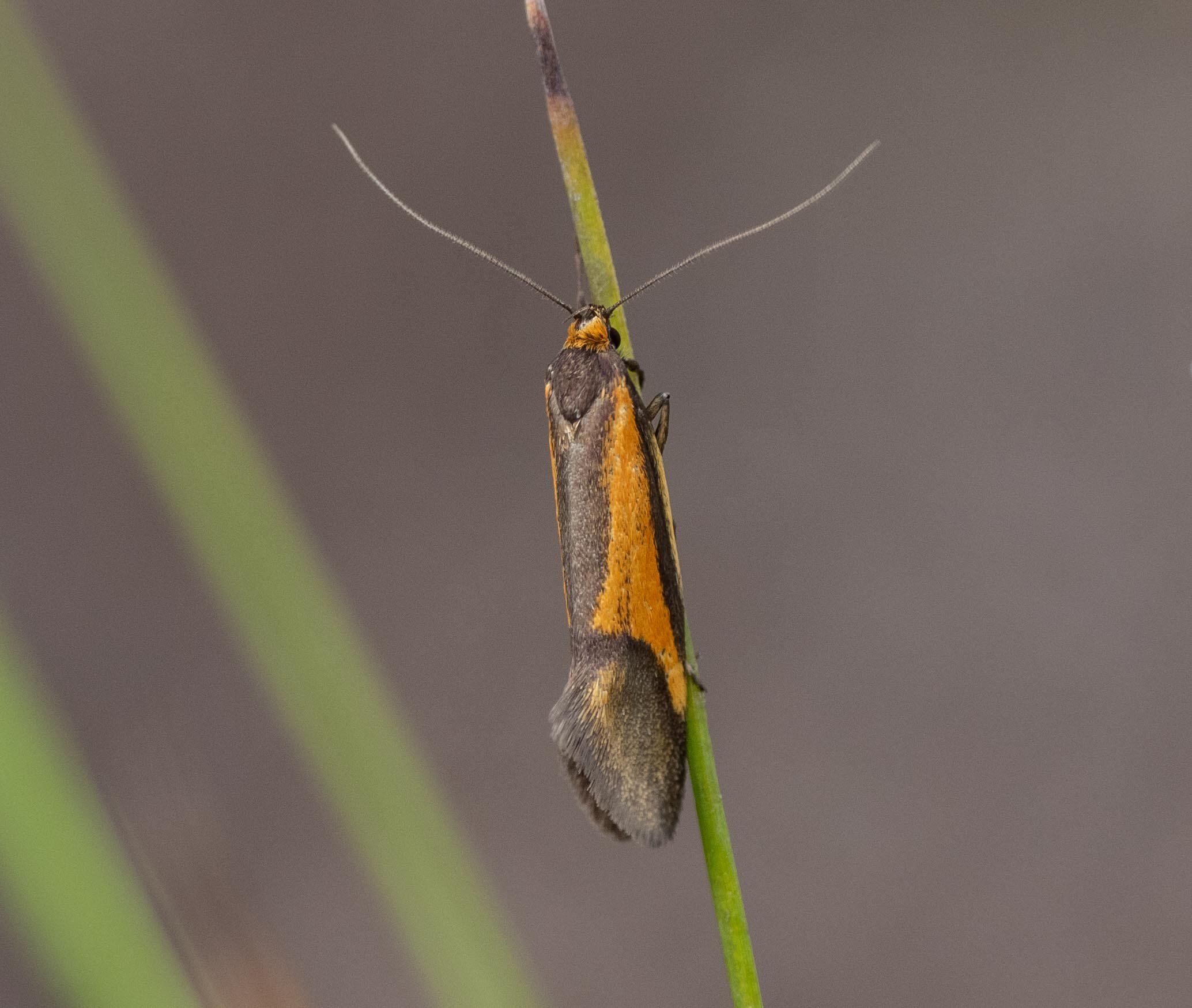

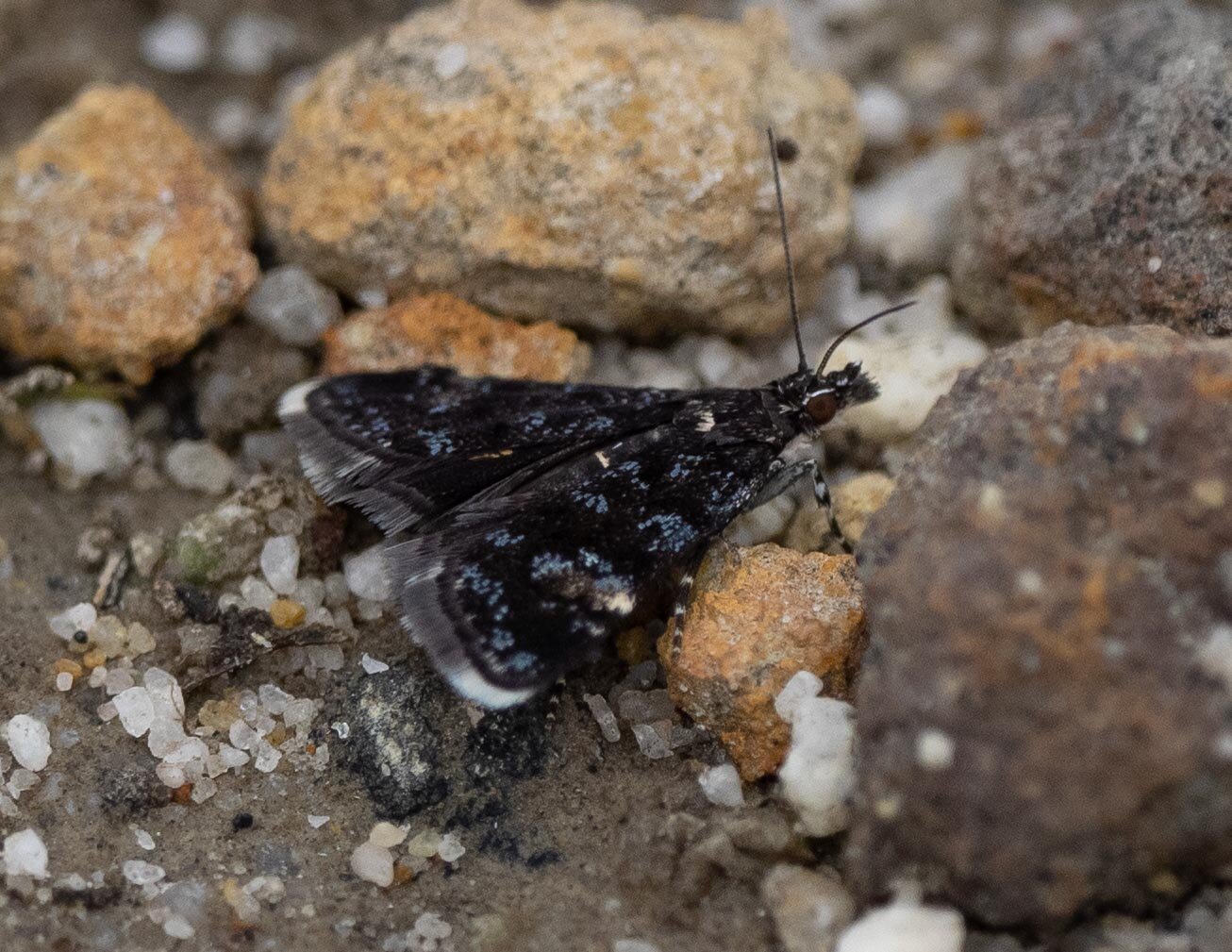
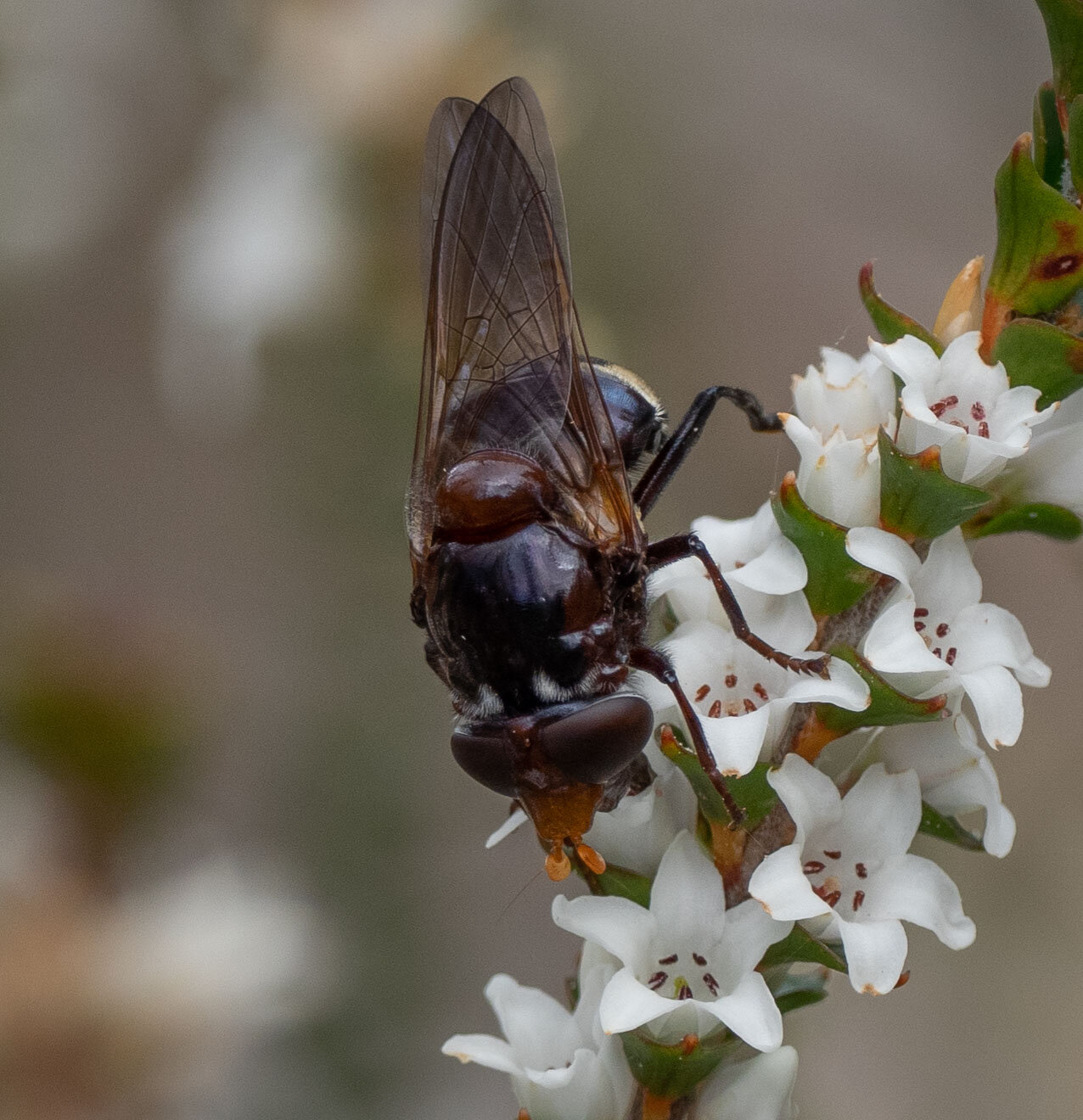

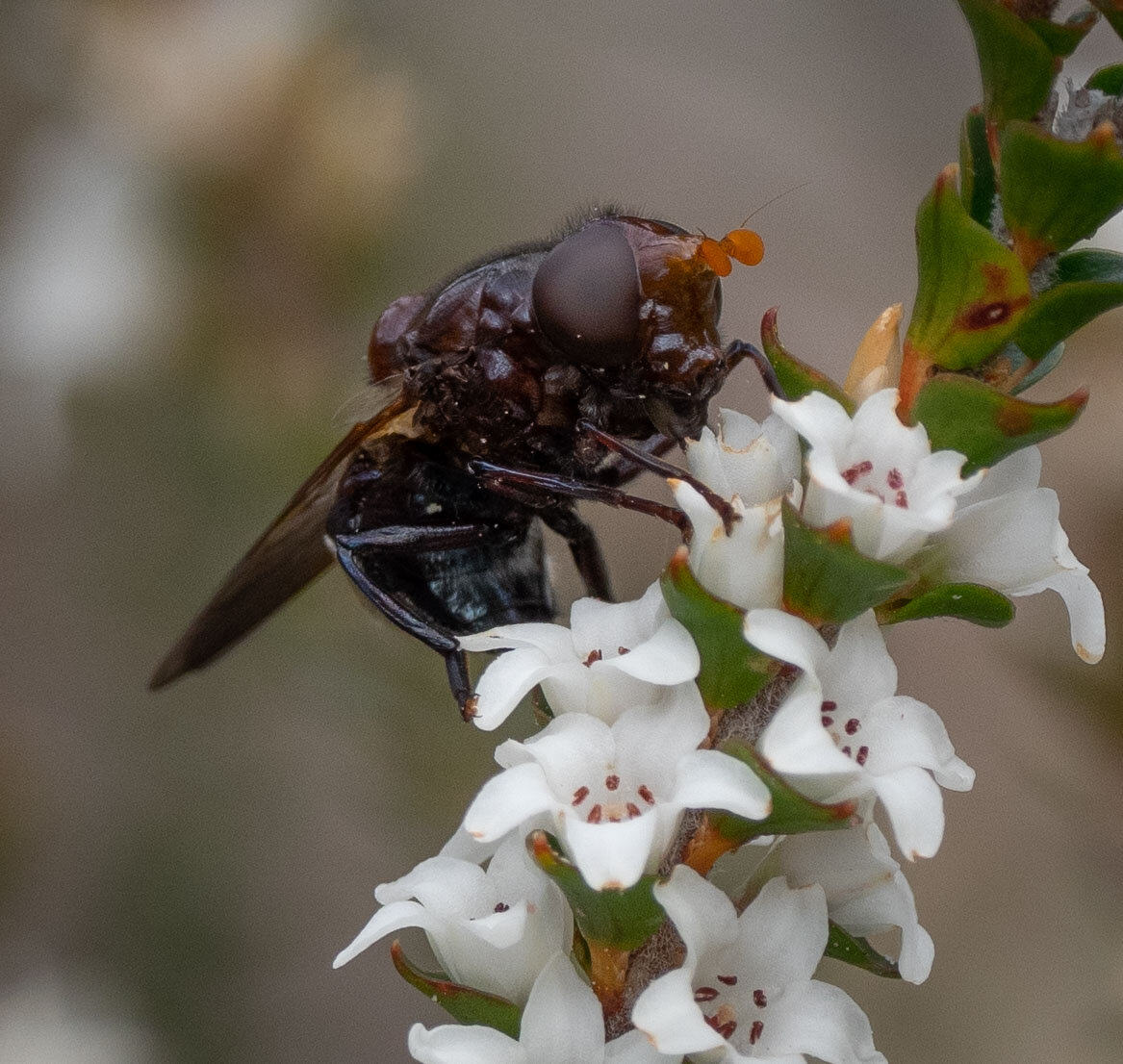
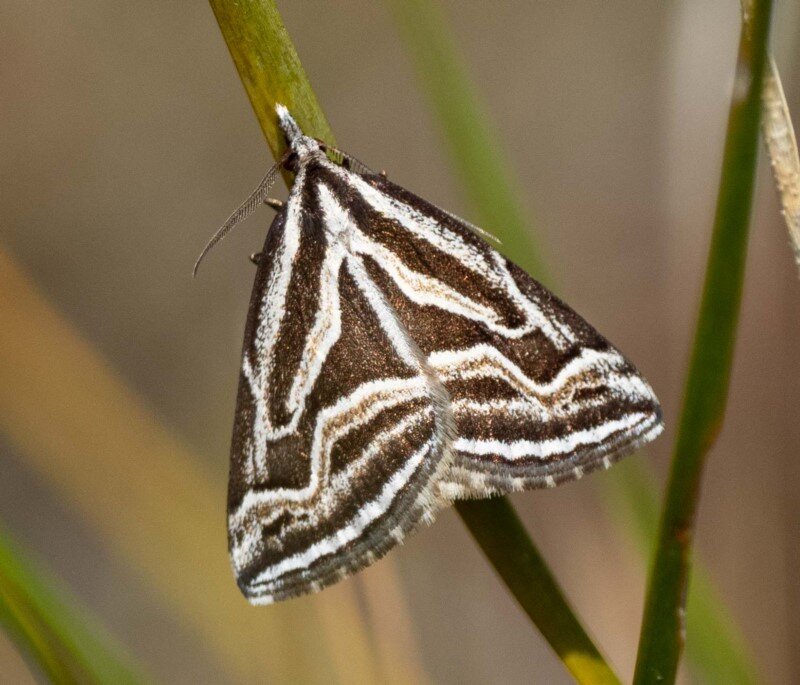
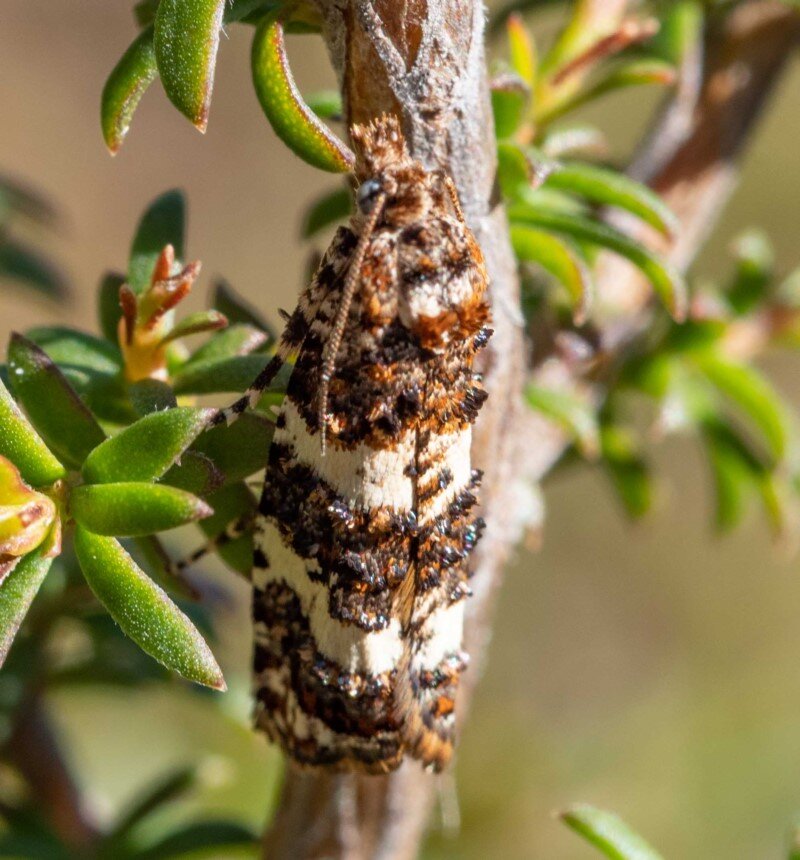
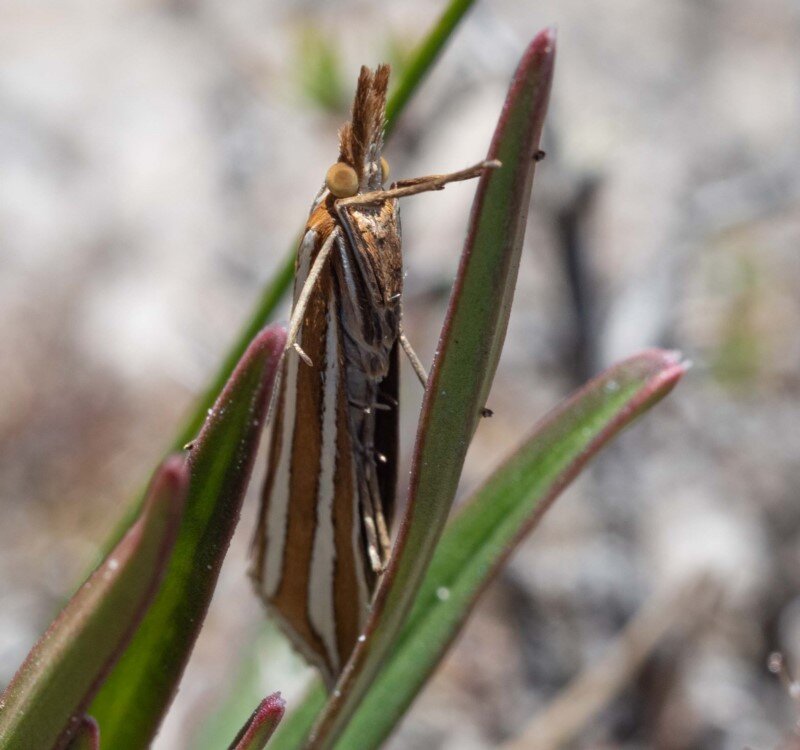
The low, dense vegetation provides ideal habitat for insects such as grasshoppers, crickets and cockroaches.
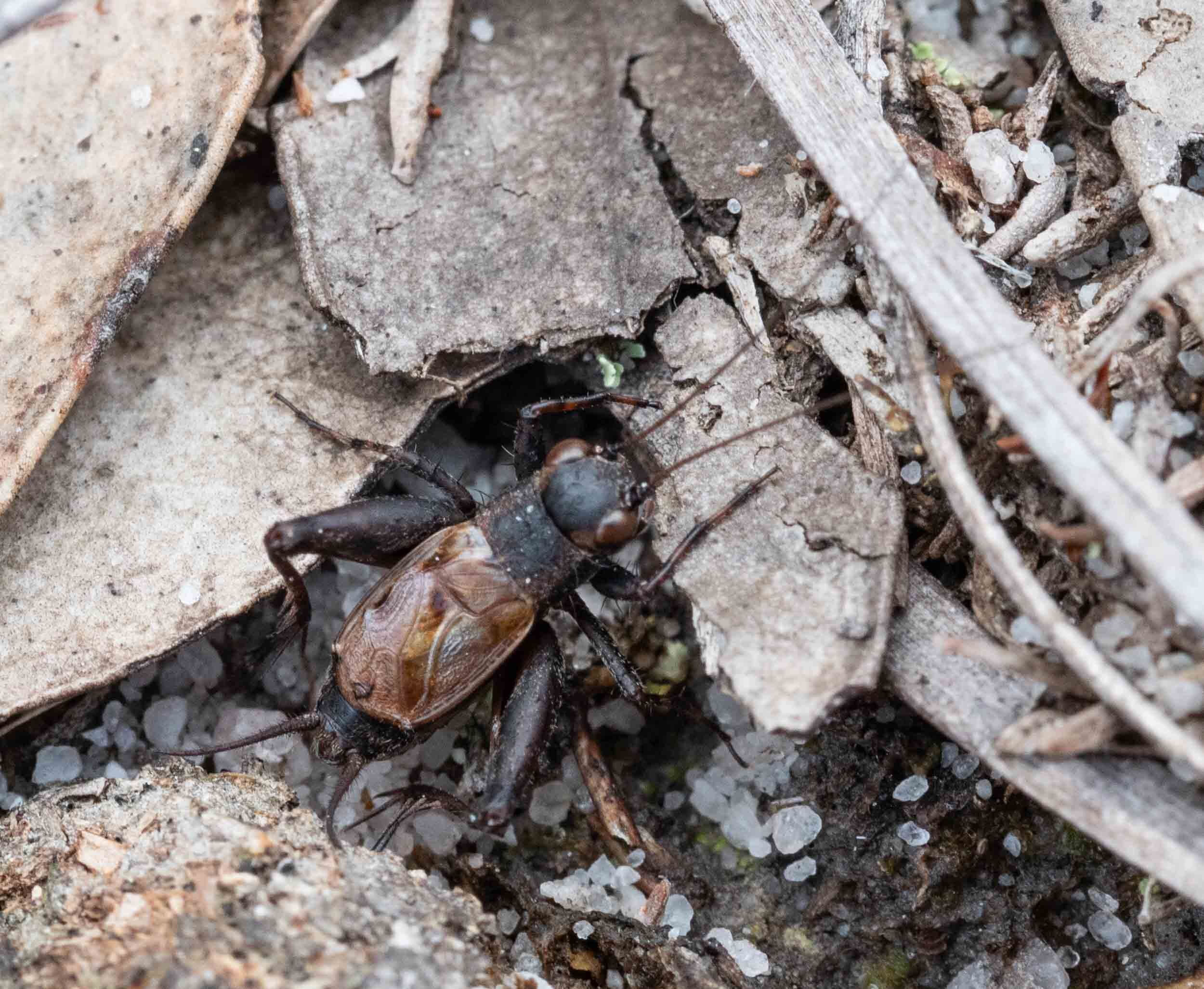
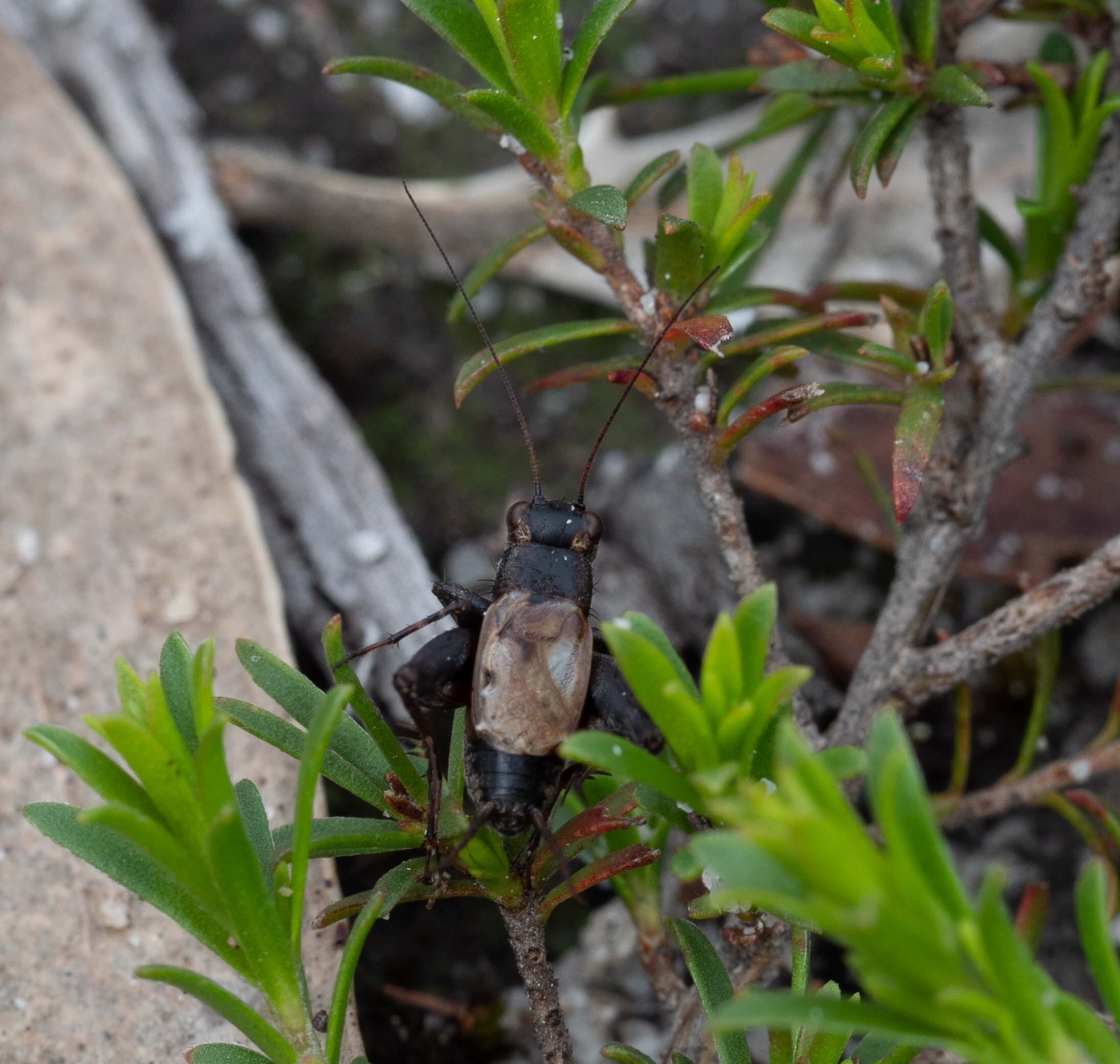
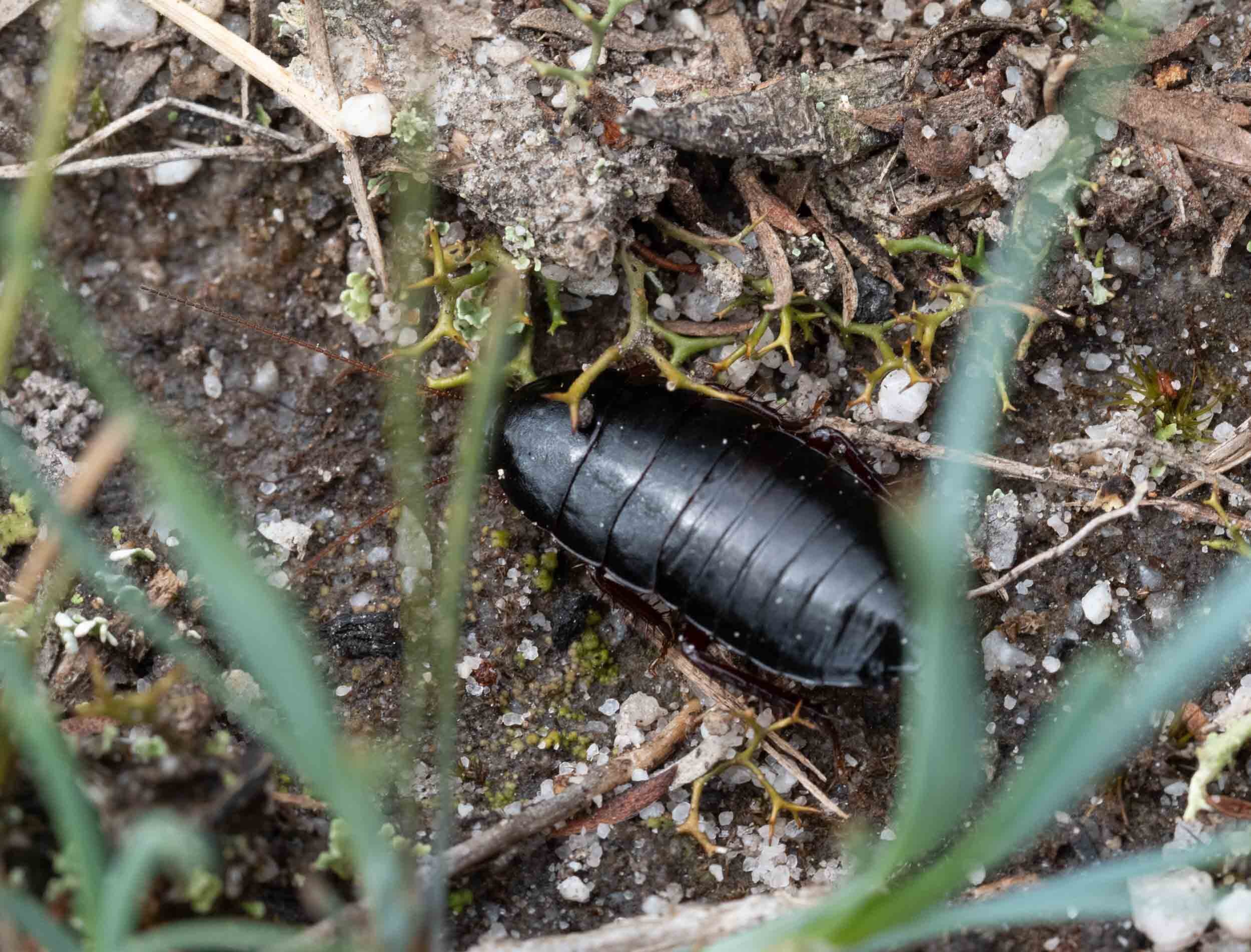

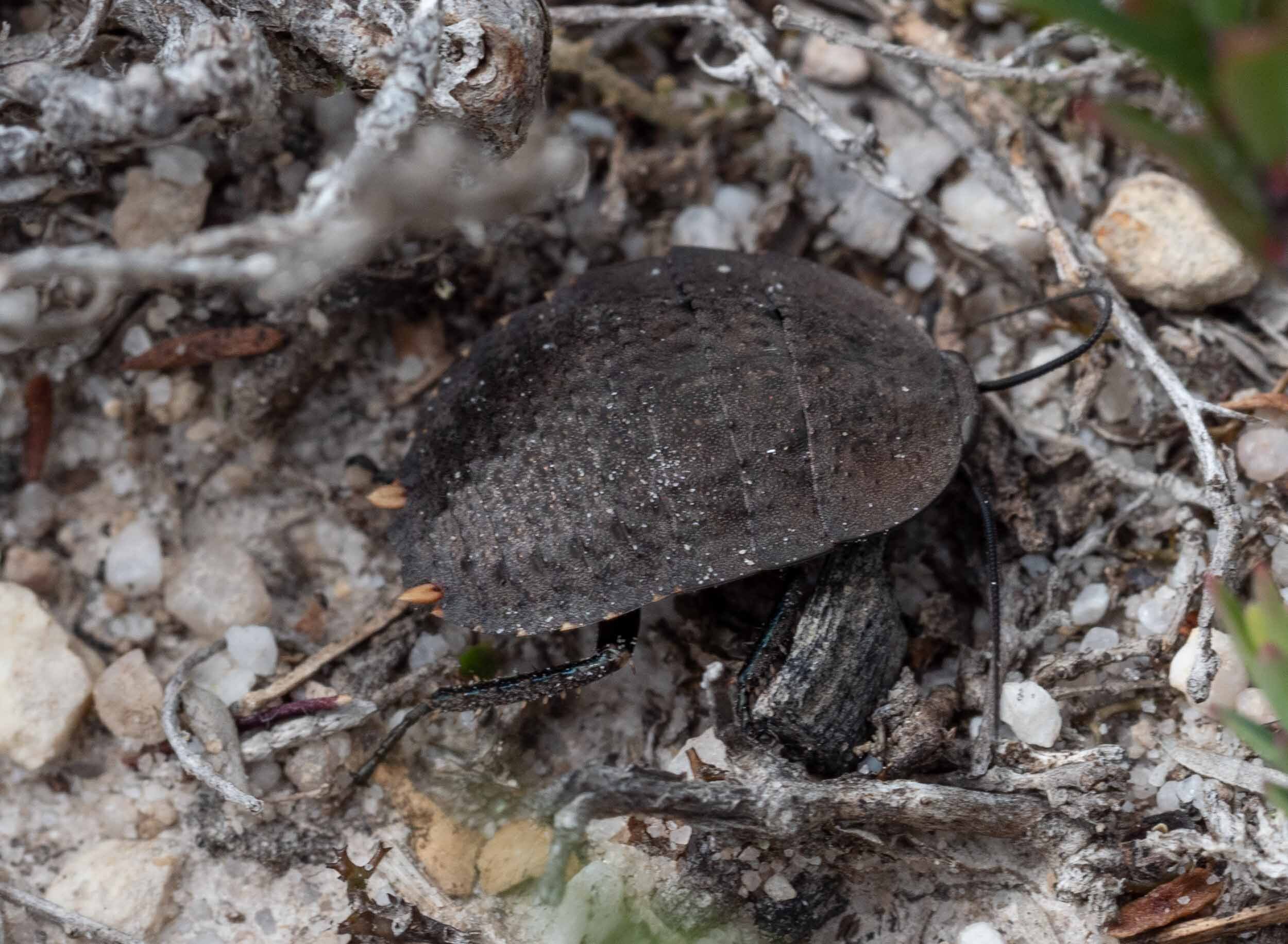
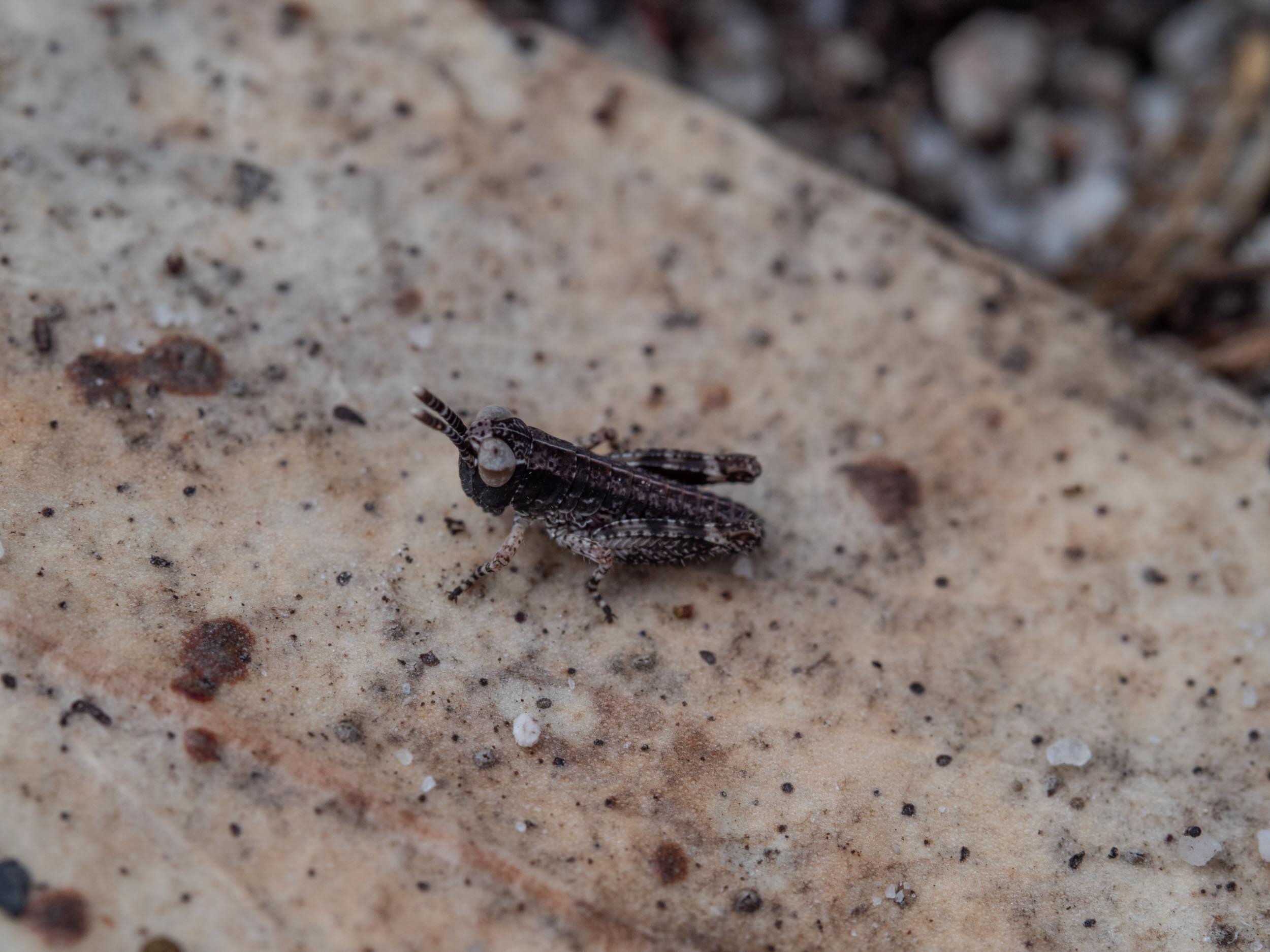
The ground was riddled with tunnels, within which lurked at least three species of wolf spiders. They could often be seen sitting at the edge of their burrows, waiting for unwary insects to pass by.

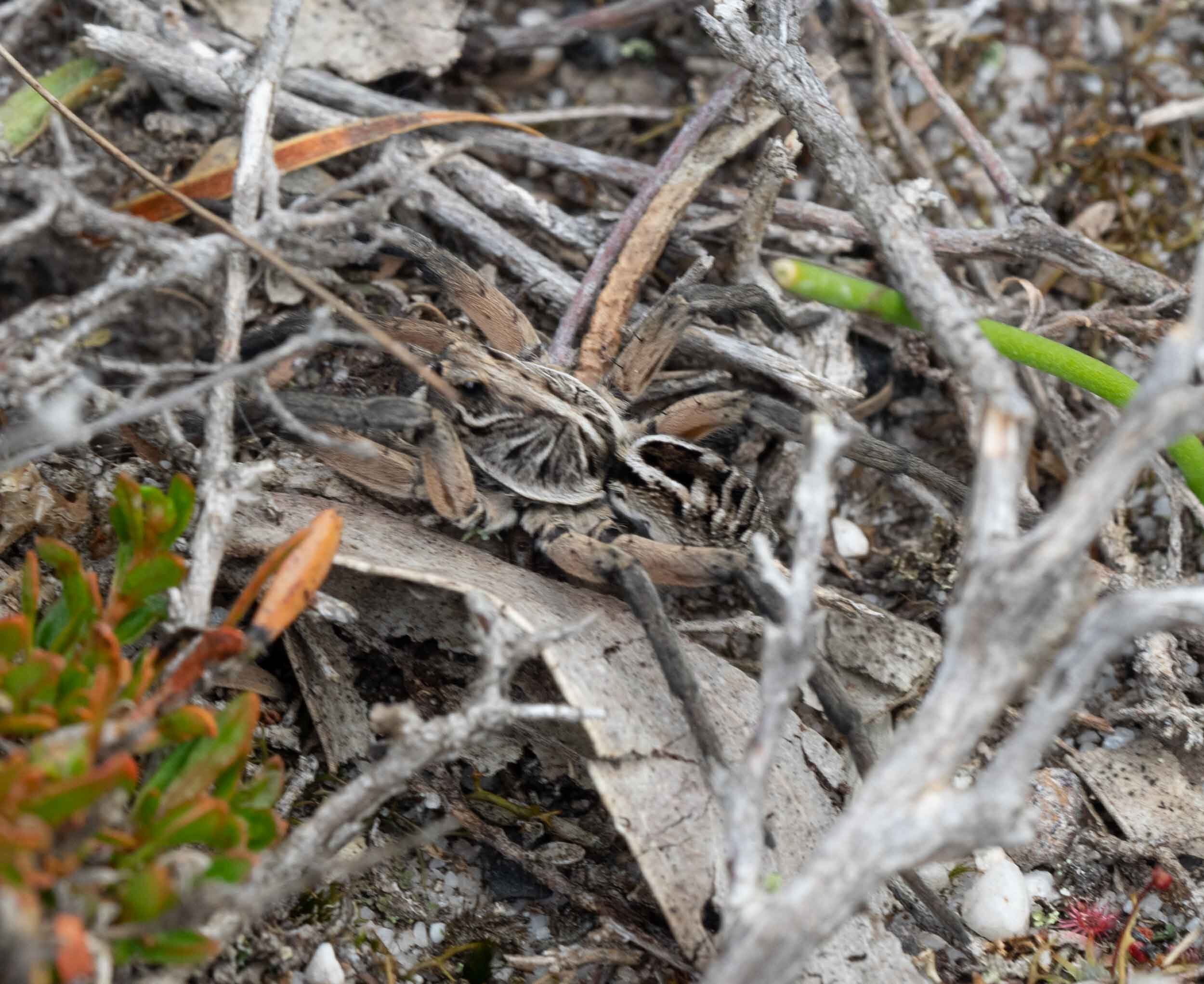
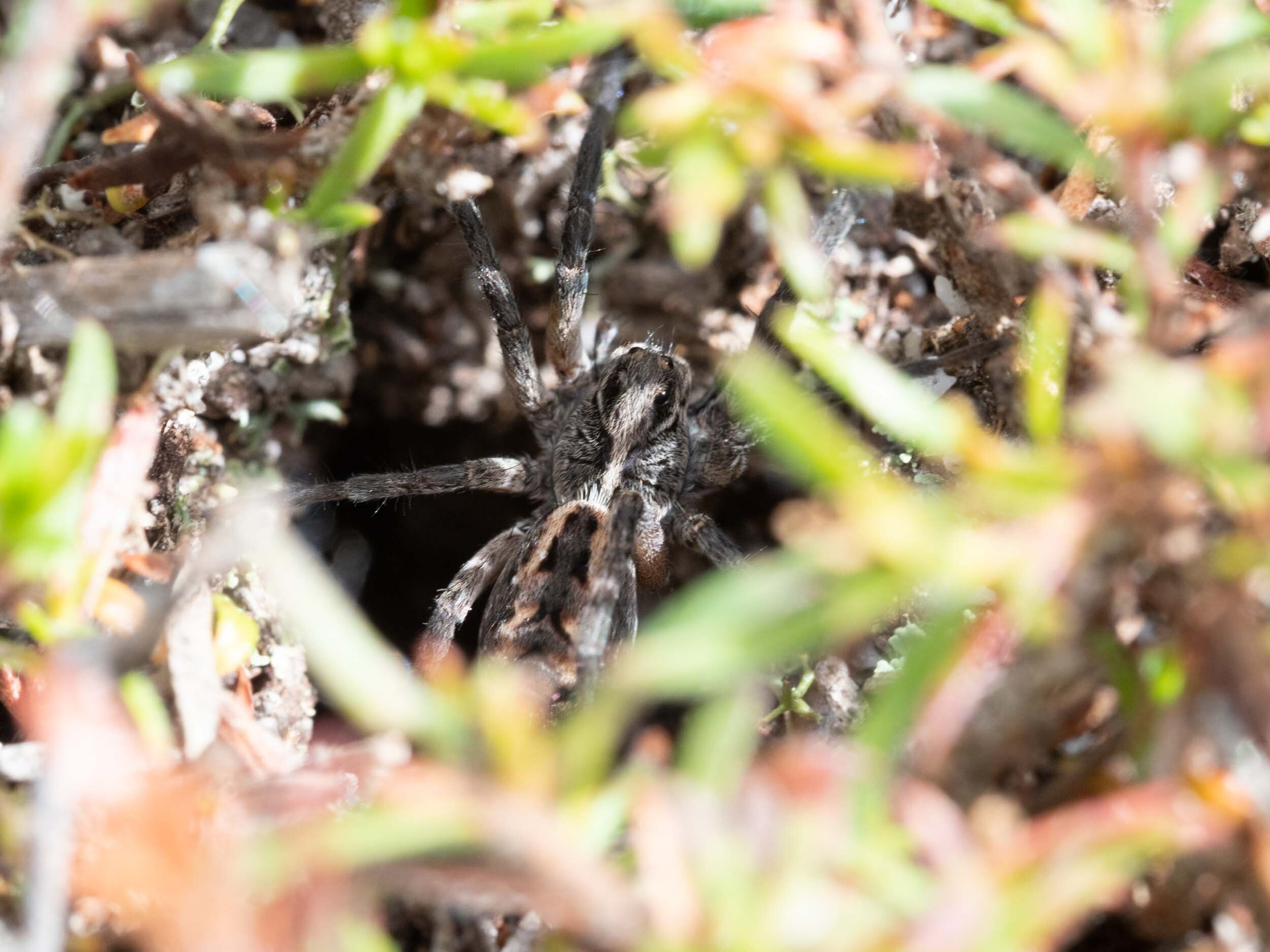
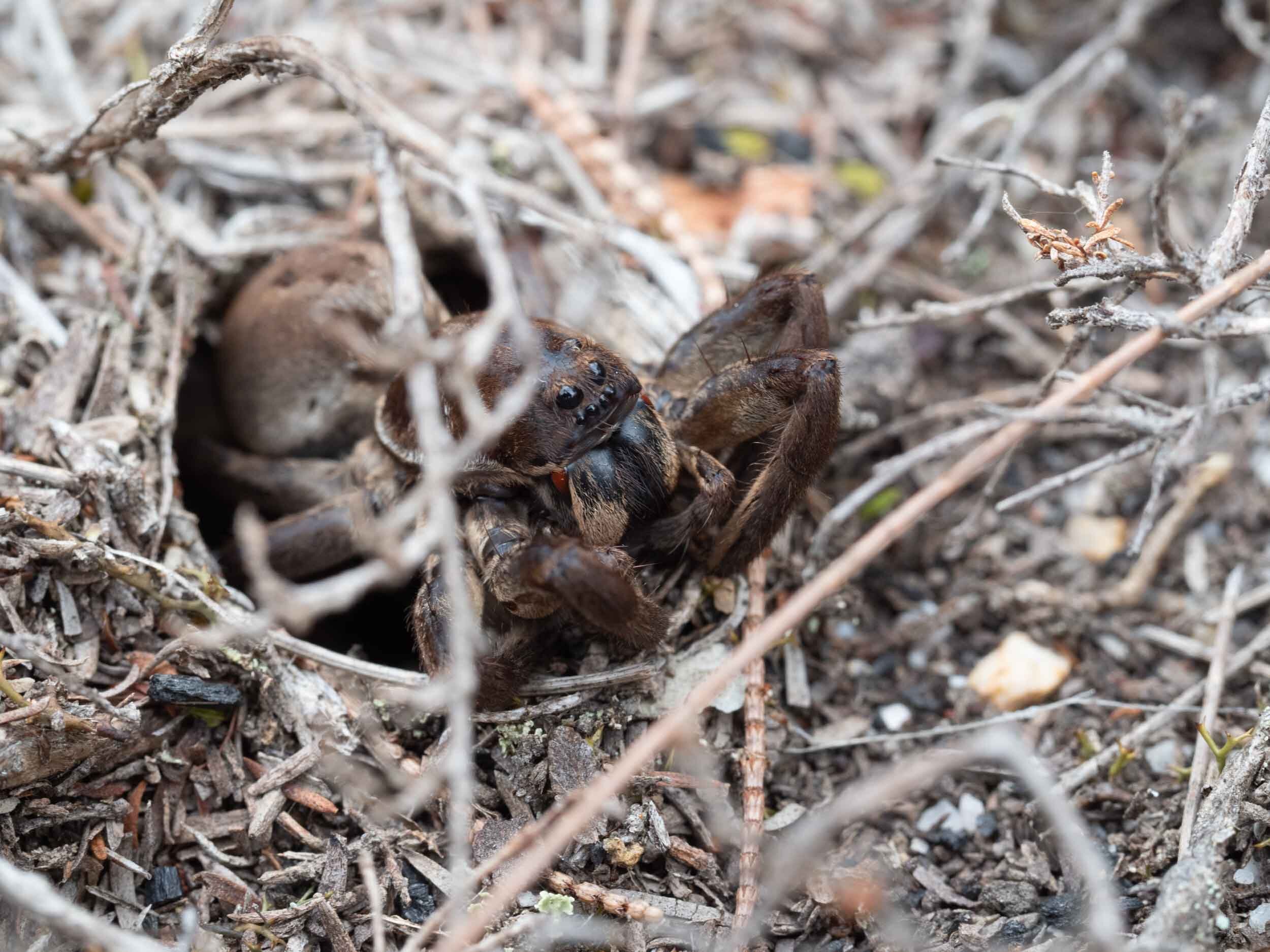
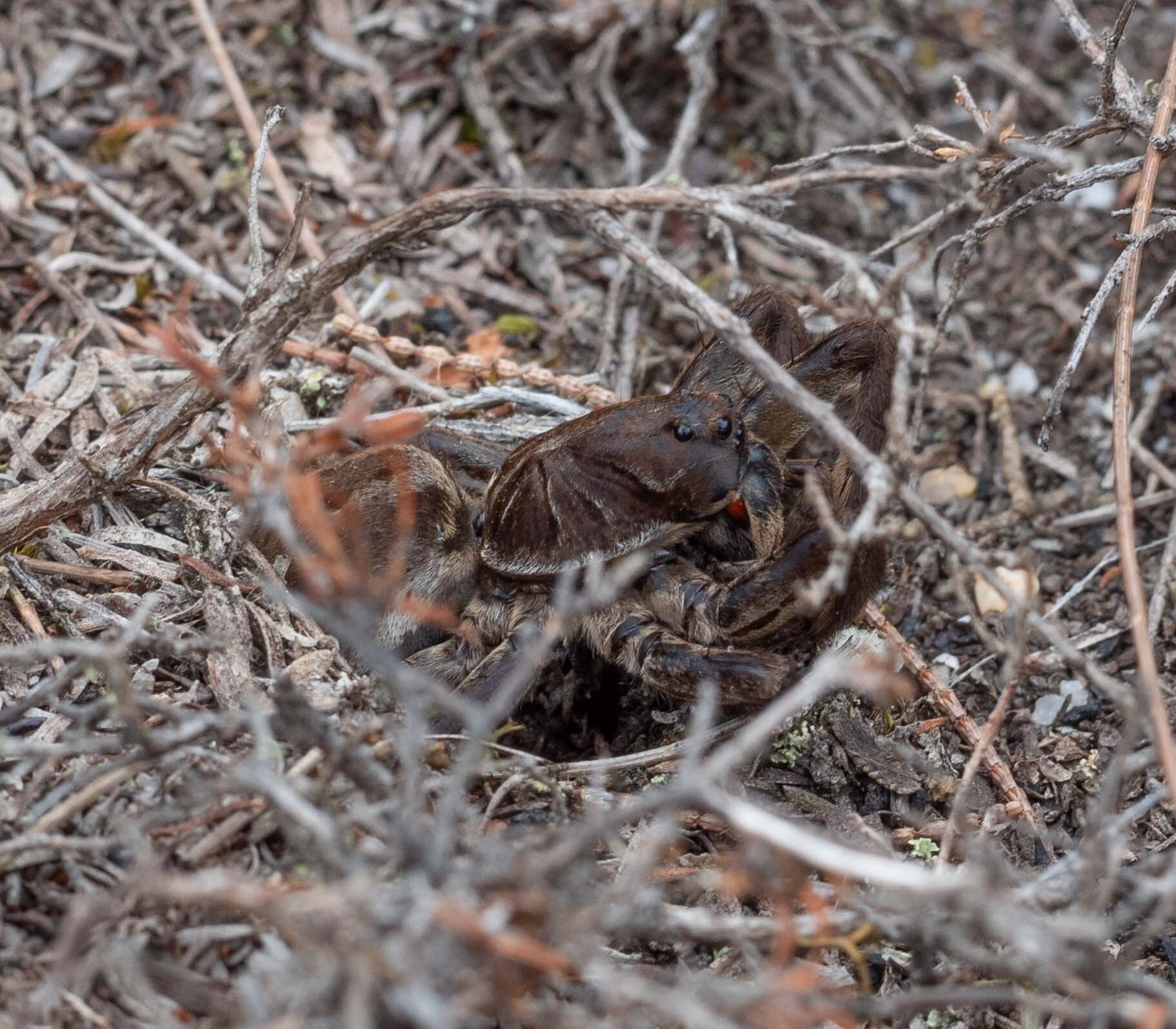
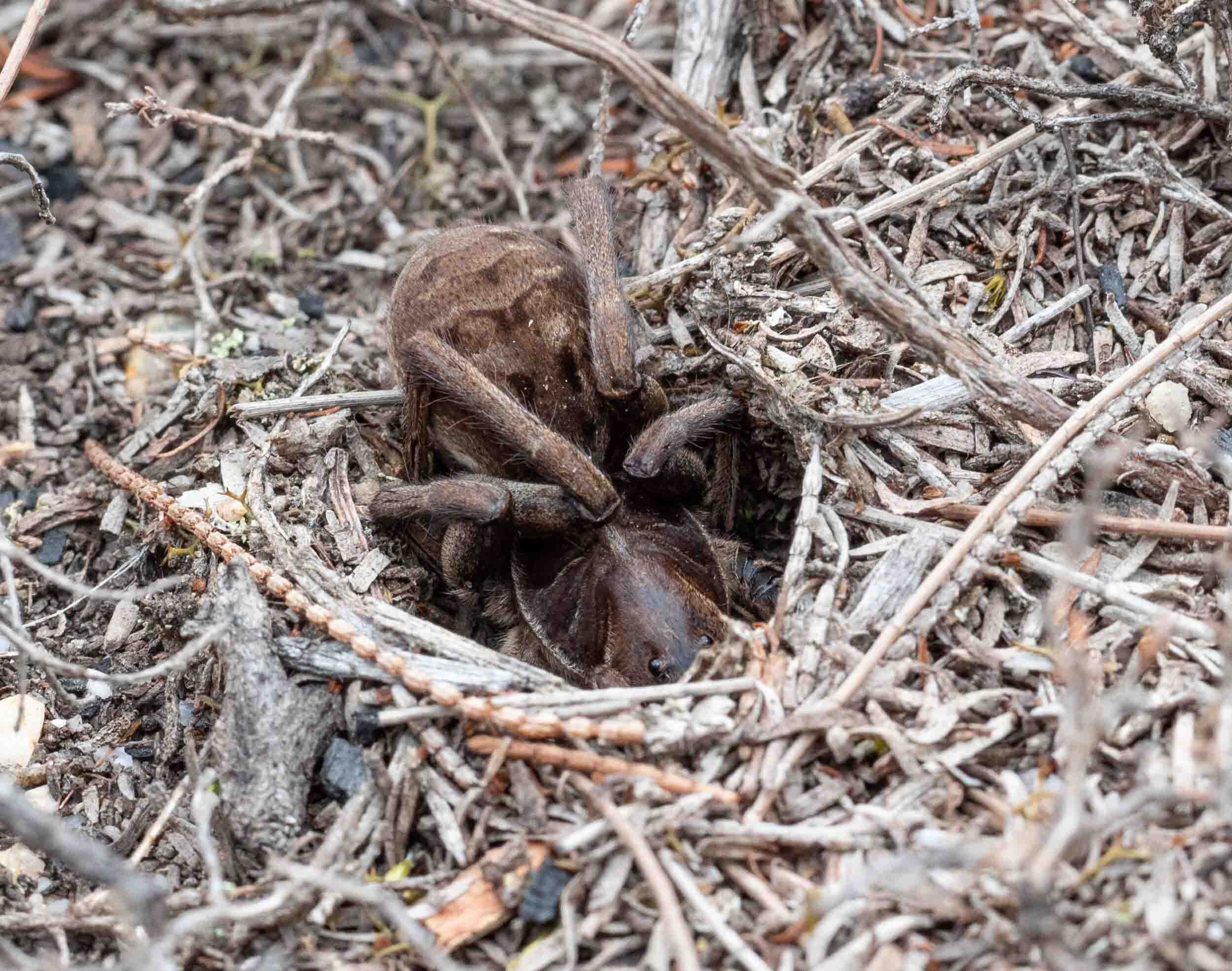
A tiny flash of blue moving rapidly along a stick caught my attention. I dropped to my belly to get a closer look.

It turned out to be a tiny jumping spider Maratus anomalus, the Blue Peacock Spider. What a beauty! He had caught and was busy digesting a small Rutherglen Bug.
The clearing is home to at least two lizard species - White’s Skink and Jacky Lizard. No shortage of insects and spiders to keep them well fed.

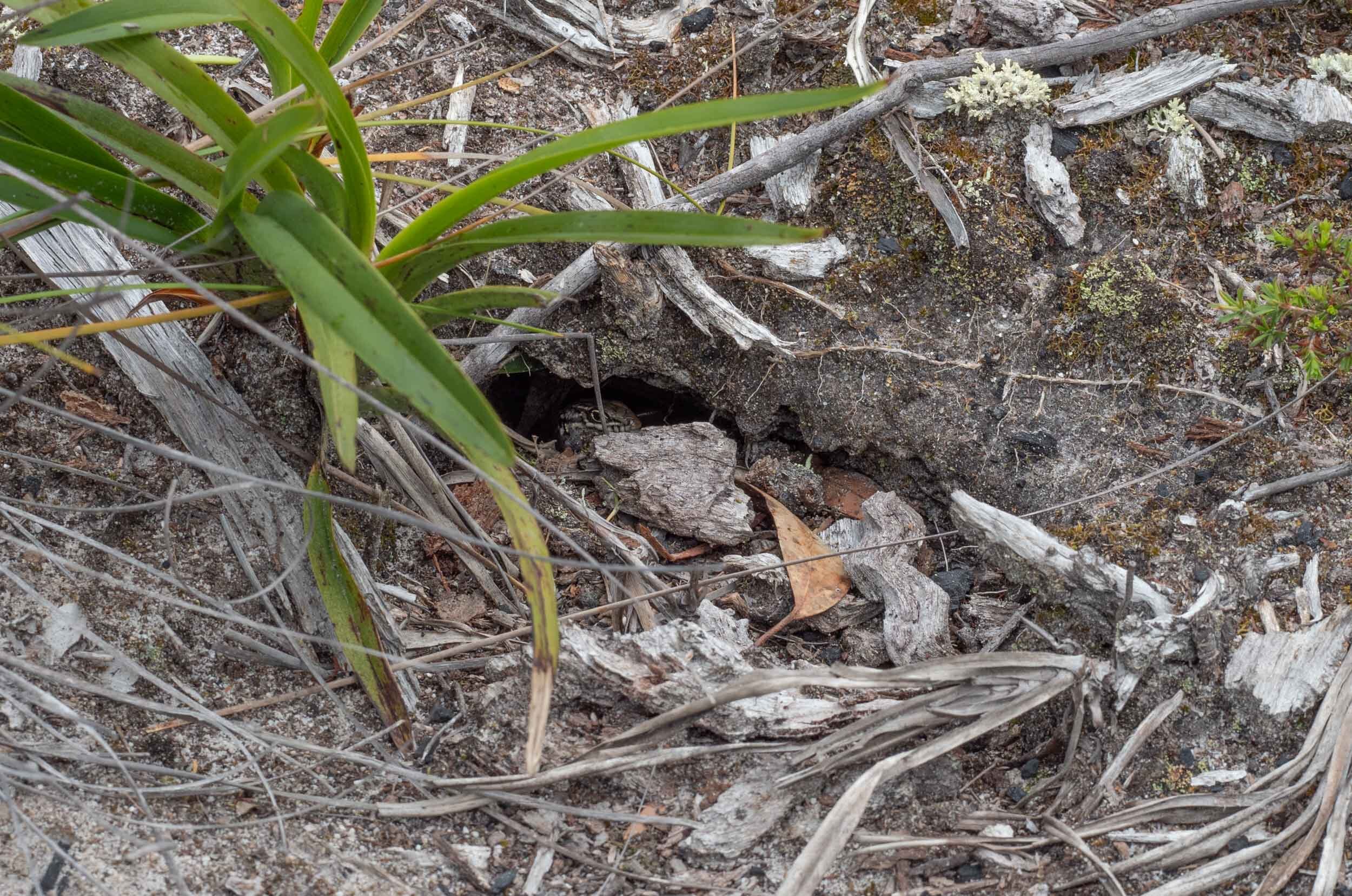
Finally, a flock of Dusky Woodswallows sat in a clump of trees at the edge of the clearing. They would make occasional sallies to catch insects in flight.
So what at first sight appears to be a barren clearing actually houses a rich ecosystem - one that we’re sure to investigate further in the future.









